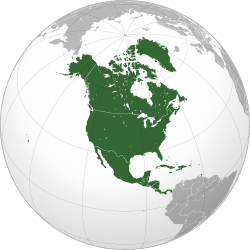Dominican Republic
The Dominican Republic (/dəˈmɪnɪkən/ də-MIN-ik-ən; Spanish: República Dominicana, pronounced [reˈpuβlika ðominiˈkana] (![]()
Dominican Republic | |
|---|---|
Motto: "Dios, Patria, Libertad" (Spanish) "God, Homeland, Freedom" | |
.svg.png) | |
| Capital and largest city | Santo Domingo 19°00′N 70°40′W |
| Official languages | Spanish |
| Ethnic groups |
|
| Religion (2017)[1] |
|
| Demonym(s) | Dominican Quisqueyan (colloquial)[3] |
| Government | Unitary presidential republic[4] |
| Luis Abinader | |
• Vice President | Raquel Peña Rodríguez |
| Legislature | Congress |
| Senate | |
| Chamber of Deputies | |
| Formation | |
| December 1, 1821 | |
| February 9, 1822 | |
| February 27, 1844 | |
| 1844–1861[5] | |
| 1861–1865 | |
| August 16, 1863[5] | |
| July 11, 1865[6] | |
• United States occupation | May 5, 1916 |
| July 12, 1924[7] | |
| April 24, 1965 | |
• Fourth Republic | July 1, 1966 |
| June 13, 2015[8][9] | |
| Area | |
• Total | 48,671 km2 (18,792 sq mi) (128th) |
• Water (%) | 0.7[4] |
| Population | |
• 2018 estimate | 10,735,896[10] (86th) |
| 9,445,281[11] | |
• Density | 220/km2 (569.8/sq mi) (65th) |
| GDP (PPP) | 2020 estimate |
• Total | $215.999 billion[12] |
• Per capita | $20,625[12] |
| GDP (nominal) | 2020 estimate |
• Total | $96.291 billion[12] |
• Per capita | $9,195 [12] |
| Gini (2018) | medium |
| HDI (2018) | high · 89th |
| Currency | Peso[15] (DOP) |
| Time zone | UTC – 4:00[4] (Standard Time Caribbean) |
| Driving side | right |
| Calling code | +1-809, +1-829, +1-849 |
| ISO 3166 code | DO |
| Internet TLD | .do[4] |
The native Taíno people had inhabited Hispaniola before the arrival of the Europeans, dividing it into five chiefdoms.[4] The Taíno people had eventually moved north over many years, and lived around the Caribbean islands. The Taíno natives had done quite well for themselves and were on their way to being an organized civilization.[20] Christopher Columbus explored and claimed the island, landing here on his first voyage in 1492.[4] The colony of Santo Domingo became the site of the first permanent European settlement in the Americas and the first seat of the Spanish colonial rule in the New World. Meanwhile, France occupied the western third of Hispaniola, naming their colony Saint-Domingue, which became the independent state of Haiti in 1804.[4] After more than three hundred years of Spanish rule the Dominican people declared independence in November 1821.[4] The leader of the independence movement José Núñez de Cáceres, intended the Dominican nation to unite with the country of Gran Colombia, but the newly independent Dominicans were forcefully annexed by Haiti in February 1822. Independence came 22 years later in 1844,[4] after victory in the Dominican War of Independence. Over the next 72 years the Dominican Republic experienced mostly internal conflicts and a brief return to Spanish colonial status before permanently ousting the Spanish during the Dominican War of Restoration of 1863–1865.[21][22][23] The United States occupied the country between 1916 and 1924; a subsequent calm and prosperous six-year period under Horacio Vásquez followed. From 1930 the dictatorship of Rafael Leónidas Trujillo ruled until 1961.[4] A civil war in 1965, the country's last, was ended by U.S. military occupation and was followed by the authoritarian rule of Joaquín Balaguer (1966–1978 and 1986–1996). Since 1978 the Dominican Republic has moved toward representative democracy.[24] Danilo Medina, the Dominican Republic's current president, succeeded Fernández in 2012, winning 51% of the electoral vote over his opponent ex-president Hipólito Mejía.[25] The Dominican Republic has the largest economy in the Caribbean and Central American region and is the eighth-largest economy in Latin America.[26][27] Over the last 25 years, the Dominican Republic has had the fastest-growing economy in the Western Hemisphere – with an average real GDP growth rate of 5.3% between 1992 and 2018.[28] GDP growth in 2014 and 2015 reached 7.3 and 7.0%, respectively, the highest in the Western Hemisphere.[28] In the first half of 2016 the Dominican economy grew 7.4% continuing its trend of rapid economic growth.[29] Recent growth has been driven by construction, manufacturing, tourism, and mining. The country is the site of the second largest gold mine in the world, the Pueblo Viejo mine.[30][31] Private consumption has been strong, as a result of low inflation (under 1% on average in 2015), job creation, and a high level of remittances.
The Dominican Republic is the most visited destination in the Caribbean.[32] The year-round golf courses are major attractions.[33] A geographically diverse nation, the Dominican Republic is home to both the Caribbean's tallest mountain peak, Pico Duarte, and the Caribbean's largest lake and point of lowest elevation, Lake Enriquillo.[34] The island has an average temperature of 26 °C (78.8 °F) and great climatic and biological diversity.[33] The country is also the site of the first cathedral, castle, monastery, and fortress built in the Americas, located in Santo Domingo's Colonial Zone, a World Heritage Site.[35][36] Music and sport are of great importance in the Dominican culture, with Merengue and Bachata as the national dance and music, and baseball as the most popular sport.[15]
Etymology
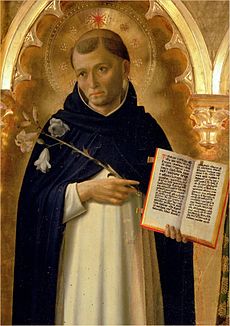
The "Dominican" word comes from the Latin Dominicus, meaning Sunday. However, the island has this name by Santo Domingo de Guzmán (Saint Dominic), founder of the Order of the Dominicans.[4]
The Dominicans established a house of high studies on the island of Santo Domingo that is now known as the Universidad Autónoma de Santo Domingo and dedicated themselves to the protection of the native Taíno people, who were subjected to slavery, and to the education of the inhabitants of the island.[37]
For most of its history, up until independence, the country was known as Santo Domingo[38] – the name of its present capital and patron saint, Saint Dominic – and continued to be commonly known as such in English until the early 20th century.[39] The residents were called "Dominicans" (Dominicanos), the adjectival form of "Domingo", and the revolutionaries named their newly independent country "Dominican Republic" (República Dominicana).
In the national anthem of the Dominican Republic (himno nacional de la República Dominicana), the term "Dominicans" does not appear. The author of its lyrics, Emilio Prud'Homme, consistently uses the poetic term "Quisqueyans" (Quisqueyanos). The word "Quisqueya" derives from a native tongue of the Taíno Indians and means "Mother of the lands" (Madre de las tierras). It is often used in songs as another name for the country. The name of the country is often shortened to "the D.R." (la R.D.)[40]
History
Pre-European history
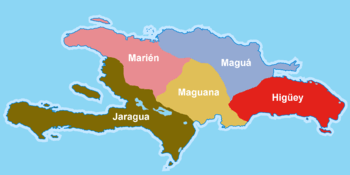
The Arawakan-speaking Taíno moved into Hispaniola from the north east region of what is now known as South America, displacing earlier inhabitants,[41] c. 650 C.E. They engaged in farming and fishing[42] and hunting and gathering.[41] The fierce Caribs drove the Taíno to the northeastern Caribbean during much of the 15th century.[43] The estimates of Hispaniola's population in 1492 vary widely, including one hundred thousand,[44] three hundred thousand,[41] and four hundred thousand to two million.[45] Determining precisely how many people lived on the island in pre-Columbian times is next to impossible, as no accurate records exist.[46] By 1492 the island was divided into five Taíno chiefdoms.[47][48] The Taíno name for the entire island was either Ayiti or Quisqueya.[49]
The Spaniards arrived in 1492. After initially friendly relationships, the Taínos resisted the conquest, led by the female Chief Anacaona of Xaragua and her ex-husband Chief Caonabo of Maguana, as well as Chiefs Guacanagaríx, Guamá, Hatuey, and Enriquillo. The latter's successes gained his people an autonomous enclave for a time on the island. Within a few years after 1492, the population of Taínos had declined drastically, due to smallpox,[50] measles, and other diseases that arrived with the Europeans,[51] and from other causes discussed below.
The first recorded smallpox outbreak in the Americas occurred on Hispaniola in 1507.[51] The last record of pure Taínos in the country was from 1864. Still, Taíno biological heritage survived to an important extent, due to intermixing. Census records from 1514 reveal that 40% of Spanish men in Santo Domingo were married to Taino women,[52] and some present-day Dominicans have Taíno ancestry.[53][54] Remnants of the Taino culture include their cave paintings,[55] (including the Pomier Caves) as well as pottery designs which are still used in the small artisan village of Higüerito, Moca.[56]
European colonization
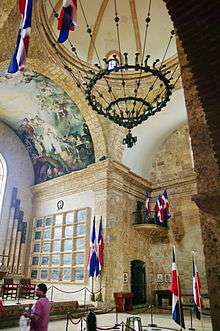
Christopher Columbus arrived on the island on December 5, 1492, during the first of his four voyages to the Americas. He claimed the land for Spain and named it La Española due to its diverse climate and terrain which reminded him of the Spanish landscape.[57] Traveling further east Columbus came across the Yaque del Norte River in the Cibao region, which he named Rio de Oro after discovering gold deposits nearby.[58] On Columbus's return during his second voyage he established the settlement of La Isabela in what is now Puerto Plata on Jan. 1494, while he sent Alonso de Ojeda to search for gold in the region.
In 1496 Bartholomew Columbus, Christopher's brother, built the city of Santo Domingo, Western Europe's first permanent settlement in the "New World." The colony thus became the springboard for the further Spanish conquest of the Americas and for decades the headquarters of Spanish colonial power in the hemisphere. Soon after the largest discovery of gold in the island was made in the cordillera central region, which led to a mining boom. By 1501, Columbus's cousin Giovanni Columbus, had also discovered gold near Buenaventura, the deposits were later known as Minas Nuevas. Two major mining areas resulted, one along San Cristóbal-Buenaventura, and another in Cibao within the La Vega-Cotuy-Bonao triangle, while Santiago de los Caballeros, Concepcion, and Bonao became mining towns. The gold rush of 1500–1508 ensued.[59] Ferdinand II of Aragon "ordered gold from the richest mines reserved for the Crown." Thus, Ovando expropriated the gold mines of Miguel Diaz and Francisco de Garay in 1504, as pit mines became royal mines, though placers were open to private prospectors. Furthermore, Ferdinand wanted the "best Indians" working his royal mines, and kept 967 in the San Cristóbal mining area supervised by salaried miners.[59]:68,71,78,125–127
Under Nicolás de Ovando y Cáceres' governorship, the Indians were made to work in the gold mines, "where they were grossly overworked, mistreated, and underfed," according to Pons. By 1503, the Spanish Crown legalized the distribution of Indians to work the mines as part of the encomienda system. According to Pons, "Once the Indians entered the mines, hunger and disease literally wiped them out." By 1508 the Indian population of about 400,000 was reduced to 60,000, and by 1514, only 26,334 remained. About half were located in the mining towns of Concepción, Santiago, Santo Domingo, and Buenaventura. The repartimiento of 1514 accelerated emigration of the Spanish colonists, coupled with the exhaustion of the mines. In 1516, a smallpox epidemic killed an additional 8,000, of the remaining 11,000 Indians, in one month. By 1519, according to Pons, "Both the gold economy and the Indian population became extinct at the same time."[60][59]:191–192
The southern city of Santo Domingo served as the administrative heart of the expanding Spanish empire. Conquistadors like Hernán Cortés and Francisco Pizarro lived and worked in Santo Domingo before they embarked on their prosperous endeavors in the American continent. Sugar cane was introduced to Hispaniola from the Canary Islands, and the first sugar mill in the New World was established in 1516, on Hispaniola.[61] The need for a labor force to meet the growing demands of sugar cane cultivation led to an exponential increase in the importation of slaves over the following two decades. The sugar mill owners soon formed a new colonial elite and convinced the Spanish king to allow them to elect the members of the Real Audiencia from their ranks. Poorer colonists subsisted by hunting the herds of wild cattle that roamed throughout the island and selling their leather.
In the 1560s English pirates joined the French in regularly raiding Spanish shipping in the Americas. With the conquest of the American mainland, Hispaniola's sugar plantation economy quickly declined. Most Spanish colonists left for the silver-mines of Mexico and Peru, while new immigrants from Spain bypassed the island. Agriculture dwindled, new imports of slaves ceased, and white colonists, free people of color, and slaves lived in similar conditions, weakening the racial hierarchy and aiding intermixing, resulting in a population of predominantly mixed Spaniard, Taino, and African descent. Except for the city of Santo Domingo, which managed to maintain some legal exports, Dominican ports were forced to rely on contraband trade, which, along with livestock, became one of the main sources of livelihood for the island's inhabitants.
By the mid-17th century the French sent colonists and privateers to settle the northwestern coast of Hispaniola due to its strategic position in the region. In order to entice the pirates, the French supplied them with women who had been taken from prisons, accused of prostitution and thieving. After decades of armed struggles with the French, Spain ceded the western coast of the island to France with the 1697 Treaty of Ryswick, whilst the Central Plateau remained under Spanish domain. France created a wealthy colony in the island, while the Spanish colony continued to suffer an economic decline.[62]
On April 17, 1655, the English landed on Hispaniola and marched 30 miles overland to Santo Domingo, the main Spanish stronghold on the island. The sweltering heat soon felled many of the northern European invaders. The Spanish defenders, having had time to prepare an ambush for the aimlessly thrashing, mosquito-swatting newcomers, sprang on them with mounted lancers, sending them careening back toward the beach in utter confusion. Their commander, Venables, hid behind a tree where, in the words of one disgusted observer, he was “so much possessed with terror that he could hardly speak.” The elite defenders of Santo Domingo were amply rewarded with titles from the Spanish Crown.
The French attacked Santiago in 1667, and this was followed by a devastating hurricane the next year and a smallpox epidemic that killed about 1,500 in 1669. In 1687, the Spaniards captured the fort at Petit-Goave, but the French fought back and hanged their leaders. Two years later Louis XIV was at war and ordered the French to invade the Spaniards, and Tarin de Cussy sacked Santiago. In 1691, the Spaniards attacked the north and sacked Cap-François. Island tensions subsided once peace was restored and Spain's last Habsburg monarch—the deformed invalid Charles II—died on 30 November 1700, being succeeded by the sixteen-year-old French Bourbon princeling Philip of Anjou.
18th century
The House of Bourbon replaced the House of Habsburg in Spain in 1700 and introduced economic reforms that gradually began to revive trade in Santo Domingo. The crown progressively relaxed the rigid controls and restrictions on commerce between Spain and the colonies and among the colonies. The last flotas sailed in 1737; the monopoly port system was abolished shortly thereafter. By the middle of the century, the population was bolstered by the emigration of Spaniards from the Canary Islands, resettling the northern part of the colony and planting tobacco in the Cibao Valley, and importation of slaves was renewed. The colony of Santo Domingo saw a population increase during the 18th century, as it rose to about 91,272 in 1750. Of this number approximately 38,272 were white landowners, 38,000 were free mixed people of color, and some 15,000 were slaves. This contrasted sharply with the population of the French colony of Saint-Domingue (present-day Haiti) – the wealthiest colony in the Caribbean and whose population of one-half a million was 90% enslaved and overall seven times as numerous as the Spanish colony of Santo Domingo.[62][63] The 'Spanish' settlers, whose blood by now was mixed with that of Tainos, Africans and Canary Guanches, proclaimed: 'It does not matter if the French are richer than us, we are still the true inheritors of this island. In our veins runs the blood of the heroic conquistadores who won this island of ours with sword and blood.'[64]
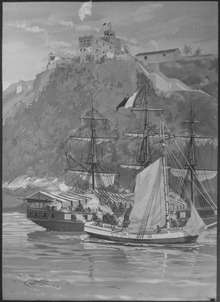
When the War of Jenkins' Ear between Spain and Britain broke out in 1739, Spanish privateers, particularly from Santo Domingo, began to troll the Caribbean Sea, a development that lasted until the end of the eighteenth century. During this period, Spanish privateers from Santo Domingo sailed into enemy ports looking for ships to plunder, thus harming commerce with Britain and New York. As a result, the Spanish obtained stolen merchandise—foodstuffs, ships, enslaved persons—that were sold in Hispaniola's ports, with profits accruing to individual sea raiders. The revenue acquired in these acts of piracy was invested in the economic expansion of the colony and led to repopulation from Europe.[65] As restrictions on colonial trade were relaxed, the colonial elites of St. Domingue offered the principal market for Santo Domingo's exports of beef, hides, mahogany, and tobacco. With the outbreak of the Haitian Revolution in 1791, the rich urban families linked to the colonial bureaucracy fled the island, while most of the rural hateros (cattle ranchers) remained, even though they lost their principal market. Although the population of Spanish Santo Domingo was perhaps one-fourth that of French Saint-Domingue, this did not prevent the Spanish king from launching an invasion of the French side of the island in 1793, attempting to take advantage of the chaos sparked by the French Revolution.[66] French forces checked Spanish progress toward Port-au-Prince in the south, but the Spanish pushed rapidly through the north, most of which they occupied by 1794.
Although the Spanish military effort went well on Hispaniola, it did not so in Europe (see War of the Pyrenees). As a consequence, Spain was forced to cede Santo Domingo to the French under the terms of the Treaty of Basel (July 22, 1795) in order to get the French to withdraw from Spain.
French rule
.jpg)
From 1795 to 1822, Santo Domingo (the city) changed hands several times along with the colony it headed. It was ceded to France in 1795 after years of struggles. However, the French failed to consolidate this cession, mainly because of the continued presence of British troops in Saint-Domingue (they remained there until 1798). As the news of Santo Domingo's cession became known on the island, many Dominicans had sided with Britain against France, welcoming British ships into their ports, pledging allegiance to the British and enlisting in the military forces of France's longtime opponent.[67]
In 1801, Toussaint Louverture, who at least in theory represented imperial France, marched into Santo Domingo from Saint-Domingue to enforce the terms of the Treaty of Basel. Toussaint's army committed numerous atrocities; as a consequence, the Spanish population fled from Santo Domingo in exodus proportions. French control of the former Spanish colony passed from Toussaint Louverture to Gen. Charles Leclerc when he seized the city of Santo Domingo in early 1802. Following the defeat of the French under Gen. Donatien de Rochembeau at Le Cap in November 1803 by the Haitians, their new leader, Dessalines, attempted to drive the French out of Santo Domingo. He invaded the Spanish side of the island, defeated the French-led Spanish colonials at River Yaque del Sur, and besieged the capital on March 5, 1805. At the same time, the Haitian General Christophe marched north through Cibao, capturing Santiago where he massacred prominent individuals who had sought refuge in a church. The arrival of small French squadrons off the Haitian coast at Goncaives and at Santo Domingo forced the Haitians to withdraw. As Christophe retreated across the island, he slaughtered and burned.[68] In October 1808 the landowner Juan Sánchez Ramírez began a rebellion against the French colonial government in Santo Domingo and the insurgents were aided by Puerto Rico and Jamaica.[69] A combined Anglo-Spanish force recaptured the territory in 1809. The Spaniards, upon re-establishing control, not only tried to re-establish slavery in Santo Domingo, but many of them also mounted raiding expeditions into Haiti to capture blacks and enslave them as well.[68]
Independence from Spain (1821)
After a dozen years of discontent and failed independence plots by various opposing groups, Santo Domingo's former Lieutenant-Governor (top administrator), José Núñez de Cáceres, declared the colony's independence from the Spanish crown as Spanish Haiti, on November 30, 1821. This period is also known as the Ephemeral independence.[70]
Unification of Hispaniola (1822–44)
_Portrait.jpg)
The newly independent republic ended two months later under the Haitian government led by Jean-Pierre Boyer.[71]
As Toussaint Louverture had done two decades earlier, the Haitians abolished slavery. In order to raise funds for the huge indemnity of 150 million francs that Haiti agreed to pay the former French colonists, and which was subsequently lowered to 60 million francs, the Haitian government imposed heavy taxes on the Dominicans. Since Haiti was unable to adequately provision its army, the occupying forces largely survived by commandeering or confiscating food and supplies at gunpoint. Attempts to redistribute land conflicted with the system of communal land tenure (terrenos comuneros), which had arisen with the ranching economy, and some people resented being forced to grow cash crops under Boyer and Joseph Balthazar Inginac's Code Rural.[lower-alpha 2] In the rural and rugged mountainous areas, the Haitian administration was usually too inefficient to enforce its own laws. It was in the city of Santo Domingo that the effects of the occupation were most acutely felt, and it was there that the movement for independence originated.
The Haitians associated the Roman Catholic Church with the French slave-masters who had exploited them before independence and confiscated all church property, deported all foreign clergy, and severed the ties of the remaining clergy to the Vatican. All levels of education collapsed; the university was shut down, as it was starved both of resources and students, with young Dominican men from 16 to 25 years old being drafted into the Haitian army. Boyer's occupation troops, who were largely Dominicans, were unpaid and had to "forage and sack" from Dominican civilians. Haiti imposed a "heavy tribute" on the Dominican people.[72]:page number needed
Haiti's constitution forbade white elites from owning land, and Dominican major landowning families were forcibly deprived of their properties. During this time, many white elites in Santo Domingo did not consider owning slaves due to the economic crisis that Santo Domingo faced during the España Boba period. The few landowners that wanted slavery established in Santo Domingo had to emigrate to other colonies such as Cuba, Puerto Rico, or Gran Colombia. Many landowning families stayed on the island, with a heavy concentration of landowners settling in the cibao region. After independence, and eventually being under Spanish rule once again in 1861, many families returned to Santo Domingo including new waves of immigration from Spain.
Dominican War of Independence (1844)
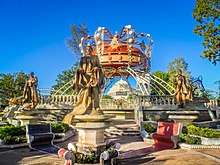
In 1838, Juan Pablo Duarte founded a secret society called La Trinitaria, which sought the complete independence of Santo Domingo without any foreign intervention.[73]:p147–149 Also Francisco del Rosario Sánchez and Ramon Matias Mella, despite not being among the founding members of La Trinitaria, were decisive in the fight for independence. Duarte, Mella, and Sánchez are considered the three Founding Fathers of the Dominican Republic.[74]
The Trinitarios took advantage of a Haitian rebellion against the dictator Jean-Pierre Boyer. They rose up on January 27, 1843, ostensibly in support of the Haitian Charles Hérard who was challenging Boyer for the control of Haiti. However, the movement soon discarded its pretext of support for Hérard and now championed Dominican independence. After overthrowing Boyer, Hérard executed some Dominicans, and threw many others into prison; Duarte escaped.[66] After subduing the Dominicans, Hérard, a mulatto, faced a rebellion by blacks in Port-au-Prince. Haiti had formed two regiments composed of Dominicans from the city of Santo Domingo; these were used by Hérard to suppress the uprising.[66]
.svg.png)
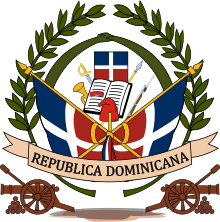
On February 27, 1844, the surviving members of La Trinitaria declared the independence from Haiti. They were backed by Pedro Santana, a wealthy cattle rancher from El Seibo, who became general of the army of the nascent republic. The Dominican Republic's first Constitution was adopted on November 6, 1844, and was modeled after the United States Constitution.[42] The decades that followed were filled with tyranny, factionalism, economic difficulties, rapid changes of government, and exile for political opponents. Archrivals Santana and Buenaventura Báez held power most of the time, both ruling arbitrarily. They promoted competing plans to annex the new nation to another power: Santana favored Spain, and Báez the United States.
Threatening the nation's independence were renewed Haitian invasions. On 19 March 1844, the Haitian Army, under the personal command of President Hérard, invaded the eastern province from the north and progressed as far as Santiago, but was soon forced to withdraw after suffering disproportionate losses. According to José María Imbert's (the General defending Santiago) report of April 5, 1844 to Santo Domingo, “in Santiago, the enemy did not leave behind in the battlefield less than six hundred dead and…the number of wounded was very superior…[while on] our part we suffered not one casualty.”[75]
The Dominicans repelled the Haitian forces, on both land and sea, by December 1845. The Haitians invaded again in 1849 after France recognized the Dominican Republic as an independent nation. In an overwhelming onslaught, the Haitians seized one frontier town after another.[76] Santana being called upon to assume command of the troops, met the enemy at Ocoa, April 21, 1849, with only 400 men, and succeeded in utterly defeating the Haitian army.[77] In November 1849 Báez launched a naval offensive against Haiti to forestall the threat of another invasion.[66] His seamen under the French adventurer, Fagalde, raided the Haitian coasts, plundered seaside villages, as far as Cape Dame Marie, and butchered crews of captured enemy ships.[78] In 1855, Haiti invaded again, but its forces were repulsed at the bloodiest clashes in the history of the Dominican–Haitian wars, the Battle of Santomé in December 1855 and the Battle of Sabana Larga in January 1856.
First Republic
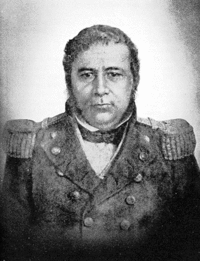
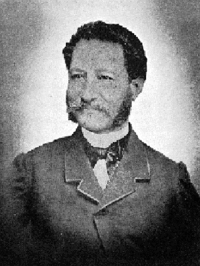
The Dominican Republic's first constitution was adopted on November 6, 1844. The state was commonly known as Santo Domingo in English until the early 20th century.[79] It featured a presidential form of government with many liberal tendencies, but it was marred by Article 210, imposed by Pedro Santana on the constitutional assembly by force, giving him the privileges of a dictatorship until the war of independence was over. These privileges not only served him to win the war but also allowed him to persecute, execute and drive into exile his political opponents, among which Duarte was the most important. In Haiti after the fall of Boyer, black leaders had ascended to the power once enjoyed exclusively by the mulatto elite.[80]
Without adequate roads, the regions of the Dominican Republic developed in isolation from one another. In the south, also known at the time as Ozama, the economy was dominated by cattle-ranching (particularly in the southeastern savannah) and cutting mahogany and other hardwoods for export. This region retained a semi-feudal character, with little commercial agriculture, the hacienda as the dominant social unit, and the majority of the population living at a subsistence level. In the north (better-known as Cibao), the nation's richest farmland, peasants supplemented their subsistence crops by growing tobacco for export, mainly to Germany. Tobacco required less land than cattle ranching and was mainly grown by smallholders, who relied on itinerant traders to transport their crops to Puerto Plata and Monte Cristi. Santana antagonized the Cibao farmers, enriching himself and his supporters at their expense by resorting to multiple peso printings that allowed him to buy their crops for a fraction of their value. In 1848, he was forced to resign and was succeeded by his vice-president, Manuel Jimenes.
After defeating a new Haitian invasion in 1849, Santana marched on Santo Domingo and deposed Jimenes in a coup d'état. At his behest, Congress elected Buenaventura Báez as President, but Báez was unwilling to serve as Santana's puppet, challenging his role as the country's acknowledged military leader. In 1853, Santana was elected president for his second term, forcing Báez into exile. Three years later, after repulsing another Haitian invasion, he negotiated a treaty leasing a portion of Samaná Peninsula to a U.S. company; popular opposition forced him to abdicate, enabling Báez to return and seize power. With the treasury depleted, Báez printed eighteen million uninsured pesos, purchasing the 1857 tobacco crop with this currency and exporting it for hard cash at immense profit to himself and his followers. Cibao tobacco planters, who were ruined when hyperinflation ensued, revolted and formed a new government headed by José Desiderio Valverde and headquartered in Santiago de los Caballeros. In July 1857 General Juan Luis Franco Bidó besieged Santo Domingo. The Cibao-based government declared an amnesty to exiles and Santana returned and managed to replace Franco Bidó in September 1857. After a year of civil war, Santana captured Santo Domingo in June 1858, overthrew both Báez and Valverde and installed himself as president.[81]
Restoration republic
In 1861, after imprisoning, silencing, exiling, and executing many of his opponents and due to political and economic reasons, Santana signed a pact with the Spanish Crown and reverted the Dominican nation to colonial status. This action was supported by the cattlemen of the south while the northern elites opposed it.[82] Spanish rule finally came to an end with the War of Restoration in 1865, after four years of conflict between Dominican nationalists and Spanish sympathizers.[83] The war claimed more than 50,000 lives.[84]
Political strife again prevailed in the following years; warlords ruled, military revolts were extremely common, and the nation amassed debt. In 1869, President Ulysses S. Grant ordered U.S. Marines to the island for the first time.[85] Pirates operating from Haiti had been raiding U.S. commercial shipping in the Caribbean, and Grant directed the Marines to stop them at their source.[85] Following the virtual takeover of the island, Báez offered to sell the country to the United States.[85] Grant desired a naval base at Samaná and also a place for resettling newly freed Blacks.[86] The treaty, which included U.S. payment of $1.5 million for Dominican debt repayment, was defeated in the United States Senate in 1870[71] on a vote of 28–28, two-thirds being required.[87][88][89]
Báez was toppled in 1874, returned, and was toppled for good in 1878. A new generation was thence in charge, with the passing of Santana (he died in 1864) and Báez from the scene. Relative peace came to the country in the 1880s, which saw the coming to power of General Ulises Heureaux.[90]
"Lilís", as the new president was nicknamed, enjoyed a period of popularity. He was, however, "a consummate dissembler", who put the nation deep into debt while using much of the proceeds for his personal use and to maintain his police state. Heureaux became rampantly despotic and unpopular.[90][91] In 1899, he was assassinated. However, the relative calm over which he presided allowed improvement in the Dominican economy. The sugar industry was modernized,[92]:p10 and the country attracted foreign workers and immigrants.
20th century (1900–30)
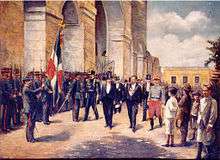
From 1902 on, short-lived governments were again the norm, with their power usurped by caudillos in parts of the country. Furthermore, the national government was bankrupt and, unable to pay Heureaux's debts, faced the threat of military intervention by France and other European creditor powers.[93]
United States President Theodore Roosevelt sought to prevent European intervention, largely to protect the routes to the future Panama Canal, as the canal was already under construction. He made a small military intervention to ward off European powers, to proclaim his famous Roosevelt Corollary to the Monroe Doctrine, and also to obtain his 1905 Dominican agreement for U.S. administration of Dominican customs, which was the chief source of income for the Dominican government. A 1906 agreement provided for the arrangement to last 50 years. The United States agreed to use part of the customs proceeds to reduce the immense foreign debt of the Dominican Republic and assumed responsibility for said debt.[42][93]
After six years in power, President Ramón Cáceres (who had himself assassinated Heureaux)[90] was assassinated in 1911. The result was several years of great political instability and civil war. U.S. mediation by the William Howard Taft and Woodrow Wilson administrations achieved only a short respite each time. A political deadlock in 1914 was broken after an ultimatum by Wilson telling the Dominicans to choose a president or see the U.S. impose one. A provisional president was chosen, and later the same year relatively free elections put former president (1899–1902) Juan Isidro Jimenes Pereyra back in power. To achieve a more broadly supported government, Jimenes named opposition individuals to his cabinet. But this brought no peace and, with his former Secretary of War Desiderio Arias maneuvering to depose him and despite a U.S. offer of military aid against Arias, Jimenes resigned on May 7, 1916.[94]
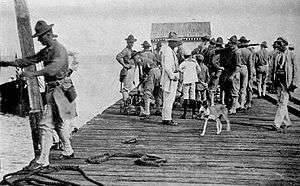
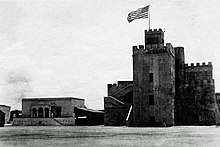
Wilson thus ordered the U.S. occupation of the Dominican Republic. U.S. Marines landed on May 16, 1916, and had control of the country two months later. The military government established by the U.S., led by Vice Admiral Harry Shepard Knapp, was widely repudiated by the Dominicans, with many factions within the country leading guerrilla campaigns against U.S. forces.[94] The occupation regime kept most Dominican laws and institutions and largely pacified the general population. The occupying government also revived the Dominican economy, reduced the nation's debt, built a road network that at last interconnected all regions of the country, and created a professional National Guard to replace the warring partisan units.[94]
Vigorous opposition to the occupation continued, nevertheless, and after World War I it increased in the U.S. as well. There, President Warren G. Harding (1921–23), Wilson's successor, worked to put an end to the occupation, as he had promised to do during his campaign. The U.S. government's rule ended in October 1922, and elections were held in March 1924.[94]
The victor was former president (1902–03) Horacio Vásquez, who had cooperated with the U.S. He was inaugurated on July 13, and the last U.S. forces left in September. In six years, the Marines were involved in at least 467 engagements, with 950 insurgents killed or wounded in action.[95] Vásquez gave the country six years of stable governance, in which political and civil rights were respected and the economy grew strongly, in a relatively peaceful atmosphere.[94][96]
During the government of Horacio Vásquez, Rafael Trujillo held the rank of lieutenant colonel and was chief of police. This position helped him launch his plans to overthrow the government of Vásquez. Trujillo had the support of Carlos Rosario Peña, who formed the Civic Movement, which had as its main objective to overthrow the government of Vásquez.
In February 1930, when Vásquez attempted to win another term, his opponents rebelled in secret alliance with the commander of the National Army (the former National Guard), General Rafael Leonidas Trujillo Molina. Trujillo secretly cut a deal with rebel leader Rafael Estrella Ureña; in return for letting Ureña take power, Trujillo would be allowed to run for president in new elections. As the rebels marched toward Santo Domingo, Vásquez ordered Trujillo to suppress them. However, feigning "neutrality," Trujillo kept his men in barracks, allowing Ureña's rebels to take the capital virtually uncontested. On March 3, Ureña was proclaimed acting president with Trujillo confirmed as head of the police and the army.
As per their agreement, Trujillo became the presidential nominee of the newly formed Patriotic Coalition of Citizens (Spanish: Coalición patriotica de los ciudadanos), with Ureña as his running mate. During the election campaign, Trujillo used the army to unleash his repression, forcing his opponents to withdraw from the race. Trujillo stood to elect himself, and in May he was elected president virtually unopposed after a violent campaign against his opponents, ascending to power on August 16, 1930.
Trujillo Era (1930–61)
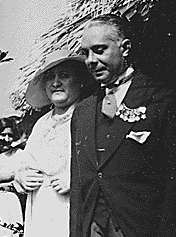
There was considerable economic growth during Rafael Trujillo's long and iron-fisted regime, although a great deal of the wealth was taken by the dictator and other regime elements. There was progress in healthcare, education, and transportation, with the building of hospitals and clinics, schools, and roads and harbors. Trujillo also carried out an important housing construction program and instituted a pension plan. He finally negotiated an undisputed border with Haiti in 1935 and achieved the end of the 50-year customs agreement in 1941, instead of 1956. He made the country debt-free in 1947.[42][97]
This was accompanied by absolute repression and the copious use of murder, torture, and terrorist methods against the opposition. Trujillo renamed Santo Domingo to "Ciudad Trujillo" (Trujillo City),[42] the nation's – and the Caribbean's – highest mountain La Pelona Grande (Spanish for: The Great Bald) to "Pico Trujillo" (Spanish for: Trujillo Peak), and many towns and a province. Some other places he renamed after members of his family. By the end of his first term in 1934 he was the country's wealthiest person,[73]:p360 and one of the wealthiest in the world by the early 1950s;[98] near the end of his regime his fortune was an estimated $800 million.[92]:p111 He used the secret police extensively to eliminate political opposition and to prevent several coup attempts during and after World War II. The secret police allegedly murdered more than 500,000[85] people during the Trujillo era.
Although one-quarter Haitian, Trujillo promoted propaganda against them.[99] In 1937, he ordered what became known as the Parsley Massacre or, in the Dominican Republic, as El Corte (The Cutting),[100] directing the army to kill Haitians living on the Dominican side of the border. The army killed an estimated 17,000 to 35,000 Haitian men, women, and children over six days, from the night of October 2, 1937, through October 8, 1937. To avoid leaving evidence of the army's involvement, the soldiers used edged weapons rather than guns.[71][99][101] The soldiers were said to have interrogated anyone with dark skin, using the shibboleth perejil (parsley) to distinguish Haitians from Afro-Dominicans when necessary; the 'r' of perejil was of difficult pronunciation for Haitians.[100] As a result of the massacre, the Dominican Republic agreed to pay Haiti US$750,000, later reduced to US$525,000.[102][96] In 1938, reports from the Dominican Republic revealed hundreds more Haitians had been killed and thousands deported.
On November 25, 1960, Trujillo killed three of the four Mirabal sisters, nicknamed Las Mariposas (The Butterflies). The victims were Patria Mercedes Mirabal (born on February 27, 1924), Argentina Minerva Mirabal (born on March 12, 1926), and Antonia María Teresa Mirabal (born on October 15, 1935). Along with their husbands, the sisters were conspiring to overthrow Trujillo in a violent revolt. The Mirabals had communist ideological leanings as did their husbands. The sisters have received many honors posthumously and have many memorials in various cities in the Dominican Republic. Salcedo, their home province, changed its name to Provincia Hermanas Mirabal (Mirabal Sisters Province). The International Day for the Elimination of Violence against Women is observed on the anniversary of their deaths.
For a long time, the U.S. and the Dominican elite supported the Trujillo government. This support persisted despite the assassinations of political opposition, the massacre of Haitians, and Trujillo's plots against other countries. The U.S. believed Trujillo was the lesser of two or more evils.[100] The U.S. finally broke with Trujillo in 1960, after Trujillo's agents attempted to assassinate the Venezuelan president, Rómulo Betancourt, a fierce critic of Trujillo.[96][103]
Trujillo had become expendable.[104] Dissidents inside the Dominican Republic argued that assassination was the only certain way to remove Trujillo.[104][105]
According to Chester Bowles, the U.S. Undersecretary of State, internal Department of State discussions in 1961 on the topic were vigorous.[106] Richard N. Goodwin, Assistant Special Counsel to the President, who had direct contacts with the rebel alliance, argued for intervention against Trujillo.[106] Quoting Bowles directly: The next morning I learned that in spite of the clear decision against having the dissident group request our assistance Dick Goodwin following the meeting sent a cable to CIA people in the Dominican Republic without checking with State or CIA; indeed, with the protest of the Department of State. The cable directed the CIA people in the Dominican Republic to get this request at any cost. When Allen Dulles found this out the next morning, he withdrew the order. We later discovered it had already been carried out.[106]
Post-Trujillo (1962–1996)
.jpg)
Trujillo was assassinated on May 30, 1961[96] with weapons supplied by the United States Central Intelligence Agency (CIA).[107]
In February 1963, a democratically elected government under leftist Juan Bosch took office but it was overthrown in September. On April 24, 1965, after 19 months of military rule, a pro-Bosch revolt broke out.[108]
Days later U.S. President Lyndon Johnson, concerned that Communists might take over the revolt and create a "second Cuba," sent the Marines, followed immediately by the U.S. Army's 82nd Airborne Division and other elements of the XVIIIth Airborne Corps, in Operation Powerpack. "We don't propose to sit here in a rocking chair with our hands folded and let the Communist set up any government in the western hemisphere," Johnson said.[109] The forces were soon joined by comparatively small contingents from the Organization of American States.[110] All these remained in the country for over a year and left after supervising elections in 1966 won by Joaquín Balaguer. He had been Trujillo's last puppet-president.[42][110]
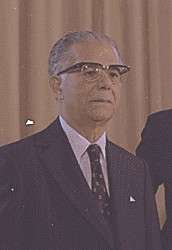
The Dominican death toll for the entire period of civil war and occupation totaled more than three thousand, many of them black civilians killed when the US-backed military junta engaged in a campaign of ethnic cleansing in the northern (also the industrial) part of Santo Domingo.[111]
Balaguer remained in power as president for 12 years. His tenure was a period of repression of human rights and civil liberties, ostensibly to keep pro-Castro or pro-communist parties out of power; 11,000 persons were killed.[112][113] His rule was criticized for a growing disparity between rich and poor. It was, however, praised for an ambitious infrastructure program, which included the construction of large housing projects, sports complexes, theaters, museums, aqueducts, roads, highways, and the massive Columbus Lighthouse, completed in 1992 during a later tenure.
During Balaguer's administration, the Dominican military forced Haitians to cut sugarcane on Dominican sugar plantations (bateyes).[114]
In 1978, Balaguer was succeeded in the presidency by opposition candidate Antonio Guzmán Fernández, of the Dominican Revolutionary Party (PRD). Another PRD win in 1982 followed, under Salvador Jorge Blanco. Under the PRD presidents, the Dominican Republic enjoyed a period of relative freedom and basic human rights.
Balaguer regained the presidency in 1986 and was re-elected in 1990 and 1994, this last time just defeating PRD candidate José Francisco Peña Gómez, a former mayor of Santo Domingo. The 1994 elections were flawed, bringing on international pressure, to which Balaguer responded by scheduling another presidential contest in 1996. Balaguer was not a candidate. The PSRC candidate was his Vice President Jacinto Peynado Garrigosa.[115]
1996–present
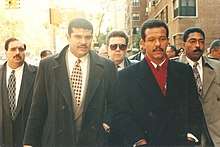
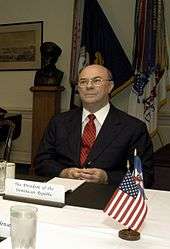
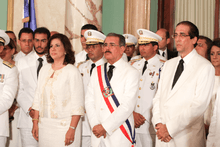
In the 1996 presidential election, Leonel Fernández achieved the first-ever win for the Dominican Liberation Party (PLD),[116] which Bosch had founded in 1973 after leaving the PRD (which he also had founded). Fernández oversaw a fast-growing economy: growth averaged 7.7% per year, unemployment fell, and there were stable exchange and inflation rates.[117]
In 2000, the PRD's Hipólito Mejía won the election. This was a time of economic troubles.[117] Mejía was defeated in his re-election effort in 2004 by Leonel Fernández of the PLD. In 2008, Fernández was as elected for a third term.[118] Fernández and the PLD are credited with initiatives that have moved the country forward technologically, such as the construction of the Metro Railway ("El Metro"). On the other hand, his administrations have been accused of corruption.[117]
Danilo Medina of the PLD was elected president in 2012 and re-elected in 2016. On the other hand, a significant increase in crime, government corruption and a weak justice system threaten to overshadow their administrative period.[119][120]
The Dominican Republic has the ninth-largest economy in Latin America and is the largest economy in the Caribbean and Central American region.[26][27] Over the last two decades, the Dominican Republic has had one of the fastest-growing economies in the Americas – with an average real GDP growth rate of 5.4% between 1992 and 2014.[28] GDP growth in 2014 and 2015 reached 7.3 and 7.0%, respectively, the highest in the Western Hemisphere.[28] In the first half of 2016 the Dominican economy grew 7.4% continuing its trend of rapid economic growth.[29] Recent growth has been driven by construction, manufacturing, tourism, and mining. Private consumption has been strong, as a result of low inflation (under 1% on average in 2015), job creation, as well as a high level of remittances.
Literature
20th century
The 20th century brought many prominent Dominican writers, and saw a general increase in the perception of Dominican literature. Writers such as Juan Bosch (one of the greatest storytellers in Latin America), Pedro Mir (national poet of the Dominican Republic[121][122][123]), Aida Cartagena Portalatin (poetess par excellence who spoke in the Era of Rafael Trujillo), Emilio Rodríguez Demorizi (the most important Dominican historian, with more than 1000 written works[124][125][126][127]), Manuel del Cabral (main Dominican poet featured in black poetry[128][129]), Hector Inchustegui Cabral (considered one of the most prominent voices of the Caribbean social poetry of the twentieth century[130][131][132][133]), Miguel Alfonseca (poet belonging to Generation 60[134][135]), Rene del Risco (acclaimed poet who was a participant in the June 14 Movement[136][137][138]), Mateo Morrison (excellent poet and writer with numerous awards), among many more prolific authors, put the island in one of the most important in Literature in the twentieth century.
21st century
New 21st century Dominican writers have not yet achieved the renown of their 20th century counterparts. However, writers such as Frank Báez (won the 2006 Santo Domingo Book Fair First Prize)[139][140], Junot Díaz (2008 Pulitzer Prize for Fiction for his novel The Brief Wondrous Life of Oscar Wao)[141] and Emil Cerda (won the Premio Joven Destacado Award 2019 for his novel Más allá de lo espiritual Vol. 1)[142][143][144], lead Dominican literature in the 21st century.
Geography
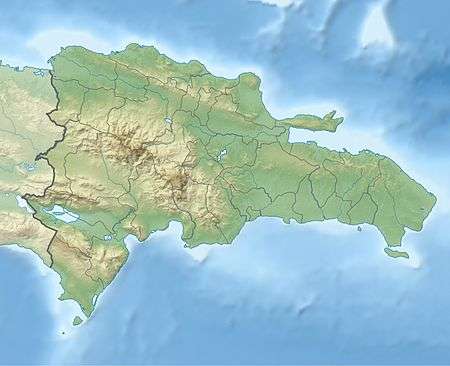
The Dominican Republic comprises the eastern five-eighths of Hispaniola, the second-largest island in the Greater Antilles, with the Atlantic Ocean to the north and the Caribbean Sea to the south. It shares the island roughly at a 2:1 ratio with Haiti, the north-to-south (though somewhat irregular) border between the two countries being 376 km (234 mi).[4] To the north and north-west lie The Bahamas and the Turks and Caicos Islands, and to the east, across the Mona Passage, the US Commonwealth of Puerto Rico. The country's area is reported variously as 48,442 km2 (18,704 sq mi) (by the embassy in the United States)[15] and 48,670 km2 (18,792 sq mi),[4] making it the second largest country in the Antilles, after Cuba. The Dominican Republic's capital and largest city Santo Domingo is on the southern coast.[4]
.jpg)
The Dominican Republic has four important mountain ranges. The most northerly is the Cordillera Septentrional ("Northern Mountain Range"), which extends from the northwestern coastal town of Monte Cristi, near the Haitian border, to the Samaná Peninsula in the east, running parallel to the Atlantic coast. The highest range in the Dominican Republic – indeed, in the whole of the West Indies – is the Cordillera Central ("Central Mountain Range"). It gradually bends southwards and finishes near the town of Azua, on the Caribbean coast. In the Cordillera Central are the four highest peaks in the Caribbean: Pico Duarte (3,098 metres or 10,164 feet above sea level),[4] La Pelona (3,094 metres or 10,151 feet), La Rucilla (3,049 metres or 10,003 feet), and Pico Yaque (2,760 metres or 9,055 feet). In the southwest corner of the country, south of the Cordillera Central, there are two other ranges: the more northerly of the two is the Sierra de Neiba, while in the south the Sierra de Bahoruco is a continuation of the Massif de la Selle in Haiti. There are other, minor mountain ranges, such as the Cordillera Oriental ("Eastern Mountain Range"), Sierra Martín García, Sierra de Yamasá, and Sierra de Samaná.
Between the Central and Northern mountain ranges lies the rich and fertile Cibao valley. This major valley is home to the cities of Santiago and La Vega and most of the farming areas of the nation. Rather less productive are the semi-arid San Juan Valley, south of the Central Cordillera, and the Neiba Valley, tucked between the Sierra de Neiba and the Sierra de Bahoruco. Much of the land around the Enriquillo Basin is below sea level, with a hot, arid, desert-like environment. There are other smaller valleys in the mountains, such as the Constanza, Jarabacoa, Villa Altagracia, and Bonao valleys.
The Llano Costero del Caribe ("Caribbean Coastal Plain") is the largest of the plains in the Dominican Republic. Stretching north and east of Santo Domingo, it contains many sugar plantations in the savannahs that are common there. West of Santo Domingo its width is reduced to 10 kilometres (6.2 mi) as it hugs the coast, finishing at the mouth of the Ocoa River. Another large plain is the Plena de Azua ("Azua Plain"), a very arid region in Azua Province. A few other small coastal plains are on the northern coast and in the Pedernales Peninsula.
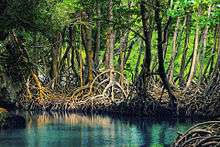
Four major rivers drain the numerous mountains of the Dominican Republic. The Yaque del Norte is the longest and most important Dominican river. It carries excess water down from the Cibao Valley and empties into Monte Cristi Bay, in the northwest. Likewise, the Yuna River serves the Vega Real and empties into Samaná Bay, in the northeast. Drainage of the San Juan Valley is provided by the San Juan River, tributary of the Yaque del Sur, which empties into the Caribbean, in the south. The Artibonito is the longest river of Hispaniola and flows westward into Haiti.
There are many lakes and coastal lagoons. The largest lake is Enriquillo, a salt lake at 45 metres (148 ft) below sea level, the lowest elevation in the Caribbean.[4] Other important lakes are Laguna de Rincón or Cabral, with fresh water, and Laguna de Oviedo, a lagoon with brackish water.
There are many small offshore islands and cays that form part of the Dominican territory. The two largest islands near shore are Saona, in the southeast, and Beata, in the southwest. Smaller islands include the Cayos Siete Hermanos, Isla Cabra, Cayo Jackson, Cayo Limón, Cayo Levantado, Cayo la Bocaina, Catalanita, Cayo Pisaje and Isla Alto Velo. To the north, at distances of 100–200 kilometres (62–124 mi), are three extensive, largely submerged banks, which geographically are a southeast continuation of the Bahamas: Navidad Bank, Silver Bank, and Mouchoir Bank. Navidad Bank and Silver Bank have been officially claimed by the Dominican Republic. Isla Cabritos lies within Lago Enriquillo.
The Dominican Republic is located near fault action in the Caribbean. In 1946, it suffered a magnitude 8.1 earthquake off the northeast coast, triggering a tsunami that killed about 1,800, mostly in coastal communities. Caribbean countries and the United States have collaborated to create tsunami warning systems and are mapping high-risk low-lying areas.
Climate
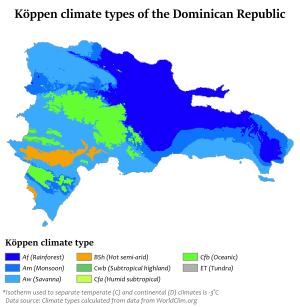
The Dominican Republic has a tropical rainforest climate in the coastal and lowland areas. Due to its diverse topography, Dominican Republic's climate shows considerable variation over short distances and is the most varied of all the Antilles. The annual average temperature is 25 °C (77 °F). At higher elevations the temperature averages 18 °C (64.4 °F) while near sea level the average temperature is 28 °C (82.4 °F). Low temperatures of 0 °C (32 °F) are possible in the mountains while high temperatures of 40 °C (104 °F) are possible in protected valleys. January and February are the coolest months of the year while August is the hottest month. Snowfall can be seen on rare occasions on the summit of Pico Duarte.[145]
The wet season along the northern coast lasts from November through January. Elsewhere the wet season stretches from May through November, with May being the wettest month. Average annual rainfall is 1,500 millimetres (59.1 in) countrywide, with individual locations in the Valle de Neiba seeing averages as low as 350 millimetres (13.8 in) while the Cordillera Oriental averages 2,740 millimetres (107.9 in). The driest part of the country lies in the west.[145]
Tropical cyclones strike the Dominican Republic every couple of years, with 65% of the impacts along the southern coast. Hurricanes are most likely between June and October.[145][4] The last major hurricane that struck the country was Hurricane Georges in 1998.[146]
Government and politics
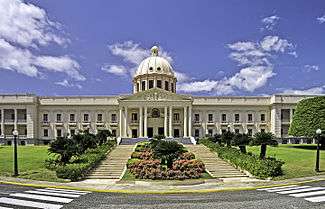
The Dominican Republic is a representative democracy or democratic republic,[15][4][118] with three branches of power: executive, legislative, and judicial. The president of the Dominican Republic heads the executive branch and executes laws passed by the congress, appoints the cabinet, and is commander in chief of the armed forces. The president and vice-president run for office on the same ticket and are elected by direct vote for 4-year terms. The national legislature is bicameral, composed of a senate, which has 32 members, and the Chamber of Deputies, with 178 members.[118]
Judicial authority rests with the Supreme Court of Justice's 16 members. They are appointed by a council composed of the president, the leaders of both houses of Congress, the President of the Supreme Court, and an opposition or non–governing-party member. The court "alone hears actions against the president, designated members of his Cabinet, and members of Congress when the legislature is in session."[118]
The Dominican Republic has a multi-party political system. Elections are held every two years, alternating between the presidential elections, which are held in years evenly divisible by four, and the congressional and municipal elections, which are held in even-numbered years not divisible by four. "International observers have found that presidential and congressional elections since 1996 have been generally free and fair."[118] The Central Elections Board (JCE) of nine members supervises elections, and its decisions are unappealable.[118] Starting from 2016, elections will be held jointly, after a constitutional reform.[147]
Political culture
The three major parties are the conservative Social Christian Reformist Party (Spanish: Partido Reformista Social Cristiano (PRSC)), in power 1966–78 and 1986–96; and the social democratic Dominican Revolutionary Party (Spanish: Partido Revolucionario Dominicano (PRD)), in power in 1963, 1978–86, and 2000–04; and the Dominican Liberation Party (Spanish: Partido de la Liberación Dominicana (PLD)), in power 1996–2000 and since 2004.
The presidential elections of 2008 were held on May 16, 2008, with incumbent Leonel Fernández winning 53% of the vote.[148] He defeated Miguel Vargas Maldonado, of the PRD, who achieved a 40.48% share of the vote. Amable Aristy, of the PRSC, achieved 4.59% of the vote. Other minority candidates, which included former Attorney General Guillermo Moreno from the Movement for Independence, Unity and Change (Spanish: Movimiento Independencia, Unidad y Cambio (MIUCA)), and PRSC former presidential candidate and defector Eduardo Estrella, obtained less than 1% of the vote.
In the 2012 presidential elections, the incumbent president Leonel Fernández (PLD) declined his aspirations[149] and instead the PLD elected Danilo Medina as its candidate. This time the PRD presented ex-president Hipolito Mejia as its choice. The contest was won by Medina with 51.21% of the vote, against 46.95% in favor of Mejia. Candidate Guillermo Moreno obtained 1.37% of the votes.[150]
In 2014, the Modern Revolutionary Party (Spanish: Partido revolucionario Moderno) was created[151] by a faction of leaders from the PRD and has since become the predominant opposition party, polling in second place for the upcoming May 2016 general elections.[152]
Foreign relations
The Dominican Republic has a close relationship with the United States, mostly with the Commonwealth of Puerto Rico, and with the other states of the Inter-American system.
The Dominican Republic's relationship with neighbouring Haiti is strained over mass Haitian migration to the Dominican Republic, with citizens of the Dominican Republic blaming the Haitians for increased crime and other social problems.[153] The Dominican Republic is a regular member of the Organisation Internationale de la Francophonie.
The Dominican Republic has a Free Trade Agreement with the United States, Costa Rica, El Salvador, Guatemala, Honduras and Nicaragua via the Dominican Republic-Central America Free Trade Agreement.[154] And an Economic Partnership Agreement with the European Union and the Caribbean Community via the Caribbean Forum.[155]
Military
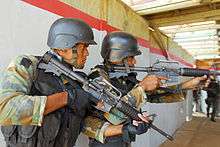
Congress authorizes a combined military force of 44,000 active duty personnel. Actual active duty strength is approximately 32,000. Approximately 50% of those are used for non-military activities such as security providers for government-owned non-military facilities, highway toll stations, prisons, forestry work, state enterprises, and private businesses. The commander in chief of the military is the president.
The army is larger than the other services combined with approximately 56,780 active duty personnel, consisting of six infantry brigades, a combat support brigade, and a combat service support brigade. The air force operates two main bases, one in the southern region near Santo Domingo and one in the northern region near Puerto Plata. The navy operates two major naval bases, one in Santo Domingo and one in Las Calderas on the southwestern coast, and maintains 12 operational vessels. The Dominican Republic has the largest military in the Caribbean region surpassing Cuba.[156]
The armed forces have organized a Specialized Airport Security Corps (CESA) and a Specialized Port Security Corps (CESEP) to meet international security needs in these areas. The secretary of the armed forces has also announced plans to form a specialized border corps (CESEF). The armed forces provide 75% of personnel to the National Investigations Directorate (DNI) and the Counter-Drug Directorate (DNCD).[118]
The Dominican National Police force contains 32,000 agents. The police are not part of the Dominican armed forces but share some overlapping security functions. Sixty-three percent of the force serve in areas outside traditional police functions, similar to the situation of their military counterparts.[118]
In 2018, Dominican Republic signed the UN treaty on the Prohibition of Nuclear Weapons.[157]
Administrative divisions
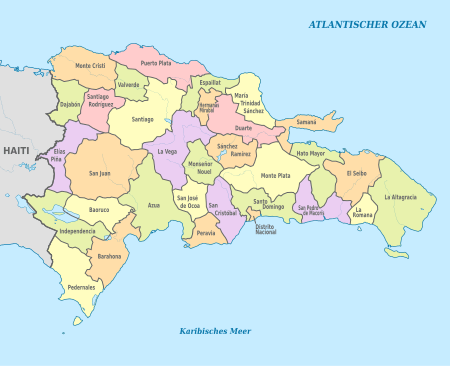
The Dominican Republic is divided into 31 provinces. Santo Domingo, the capital, is designated Distrito Nacional (National District). The provinces are divided into municipalities (municipios; singular municipio). They are the second-level political and administrative subdivisions of the country. The president appoints the governors of the 31 provinces. Mayors and municipal councils administer the 124 municipal districts and the National District (Santo Domingo). They are elected at the same time as congressional representatives.[118]
Economy
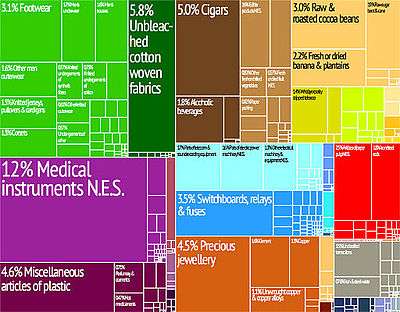
The Dominican Republic is the largest economy[26] (according to the U.S. State Department and the World Bank)[118][158] in the Caribbean and Central American region. It is an upper middle-income developing country,[159] with a 2015 GDP per capita of US$14,770, in PPP terms. Over the last 25 years, the Dominican Republic has had the fastest-growing economy in the Americas – with an average real GDP growth rate of 5.53% between 1992 and 2018.[158] GDP growth in 2014 and 2015 reached 7.3 and 7.0%, respectively, the highest in the Western Hemisphere.[28] In the first half of 2016 the Dominican economy grew 7.4%.[29] As of 2015, the average wage in nominal terms is US$392 per month (RD$17,829).[160] The country is the site of the second largest gold mine in the world, the Pueblo Viejo mine.[30][31]
During the last three decades, the Dominican economy, formerly dependent on the export of agricultural commodities (mainly sugar, cocoa and coffee), has transitioned to a diversified mix of services, manufacturing, agriculture, mining, and trade. The service sector accounts for almost 60% of GDP; manufacturing, for 22%; tourism, telecommunications and finance are the main components of the service sector; however, none of them accounts for more than 10% of the whole.[161] The Dominican Republic has a stock market, Bolsa de Valores de la Republica Dominicana (BVRD).[162] and advanced telecommunication system and transportation infrastructure.[33] High unemployment and income inequality are long-term challenges.[4] International migration affects the Dominican Republic greatly, as it receives and sends large flows of migrants. Mass illegal Haitian immigration and the integration of Dominicans of Haitian descent are major issues.[163] A large Dominican diaspora exists, mostly in the United States,[164] contributes to development, sending billions of dollars to Dominican families in remittances.[4][118]
Remittances in Dominican Republic increased to US$4571.30 million in 2014 from US$3333 million in 2013 (according to data reported by the Inter-American Development Bank). Economic growth takes place in spite of a chronic energy shortage,[165] which causes frequent blackouts and very high prices. Despite a widening merchandise trade deficit, tourism earnings and remittances have helped build foreign exchange reserves. Following economic turmoil in the late 1980s and 1990, during which the gross domestic product (GDP) fell by up to 5% and consumer price inflation reached an unprecedented 100%, the Dominican Republic entered a period of growth and declining inflation until 2002, after which the economy entered a recession.[118]
This recession followed the collapse of the second-largest commercial bank in the country, Baninter, linked to a major incident of fraud valued at US$3.5 billion. The Baninter fraud had a devastating effect on the Dominican economy, with GDP dropping by 1% in 2003 as inflation ballooned by over 27%. All defendants, including the star of the trial, Ramón Báez Figueroa (the great-grandson of President Buenaventura Báez),[166] were convicted.
According to the 2005 Annual Report of the United Nations Subcommittee on Human Development in the Dominican Republic, the country is ranked No. 71 in the world for resource availability, No. 79 for human development, and No. 14 in the world for resource mismanagement. These statistics emphasize national government corruption, foreign economic interference in the country, and the rift between the rich and poor.
The Dominican Republic has a noted problem of child labor in its coffee, rice, sugarcane, and tomato industries.[167] The labor injustices in the sugarcane industry extend to forced labor according to the U.S. Department of Labor. Three large groups own 75% of the land: the State Sugar Council (Consejo Estatal del Azúcar, CEA), Grupo Vicini, and Central Romana Corporation.[168]
According to the 2016 Global Slavery Index, an estimated 104,800 people are enslaved in the modern day Dominican Republic, or 1.00% of the population.[169] Some slaves in the Dominican Republic are held on sugar plantations, guarded by men on horseback with rifles, and forced to work.[170][171]
Currency
The Dominican peso (abbreviated $ or RD$; ISO 4217 code is "DOP")[172] is the national currency, with the United States dollar, the Euro, the Canadian dollar and the Swiss franc also accepted at most tourist sites. The exchange rate to the U.S. dollar, liberalized by 1985, stood at 2.70 pesos per dollar in August 1986,[73]:p417, 428 14.00 pesos in 1993, and 16.00 pesos in 2000. As of September 2018 the rate was 50.08 pesos per dollar.[173]
Tourism
The Dominican Republic is the most visited destination in the Caribbean. The year-round golf courses are major attractions.[33] A geographically diverse nation, the Dominican Republic is home to both the Caribbean's tallest mountain peak, Pico Duarte, and the Caribbean's largest lake and point of lowest elevation, Lake Enriquillo.[34] The island has an average temperature of 26 °C (78.8 °F) and great climatic and biological diversity.[33] The country is also the site of the first cathedral, castle, monastery, and fortress built in the Americas, located in Santo Domingo's Colonial Zone, a World Heritage Site.[35][36]
Tourism is one of the fueling factors in the Dominican Republic's economic growth. The Dominican Republic is the most popular tourist destination in the Caribbean. With the construction of projects like Cap Cana, San Souci Port in Santo Domingo, Casa De Campo and the Hard Rock Hotel & Casino (ancient Moon Palace Resort) in Punta Cana, the Dominican Republic expects increased tourism activity in the upcoming years.
Ecotourism has also been a topic increasingly important in this nation, with towns like Jarabacoa and neighboring Constanza, and locations like the Pico Duarte, Bahia de las Aguilas, and others becoming more significant in efforts to increase direct benefits from tourism. Most residents from other countries are required to get a tourist card, depending on the country they live in. In the last 10 years the Dominican Republic has become one of the worlds notably progressive states in terms of recycling and waste disposal. A UN report cited there was a 221.3% efficiency increase in the previous 10 years due, in part, to the opening of the largest open air landfill site located in the north 10 km from the Haitian border.
Infrastructure
Transportation
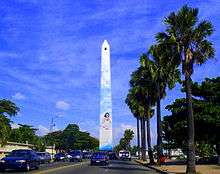
The country has three national trunk highways, which connect every major town. These are DR-1, DR-2, and DR-3, which depart from Santo Domingo toward the northern (Cibao), southwestern (Sur), and eastern (El Este) parts of the country respectively. These highways have been consistently improved with the expansion and reconstruction of many sections. Two other national highways serve as spur (DR-5) or alternative routes (DR-4).
In addition to the national highways, the government has embarked on an expansive reconstruction of spur secondary routes, which connect smaller towns to the trunk routes. In the last few years the government constructed a 106-kilometer toll road that connects Santo Domingo with the country's northeastern peninsula. Travelers may now arrive in the Samaná Peninsula in less than two hours. Other additions are the reconstruction of the DR-28 (Jarabacoa – Constanza) and DR-12 (Constanza – Bonao). Despite these efforts, many secondary routes still remain either unpaved or in need of maintenance. There is currently a nationwide program to pave these and other commonly used routes. Also, the Santiago light rail system is in planning stages but currently on hold.
Bus services
There are two main bus transportation services in the Dominican Republic: one controlled by the government, through the Oficina Técnica de Transito Terrestre (OTTT) and the Oficina Metropolitana de Servicios de Autobuses (OMSA), and the other controlled by private business, among them, Federación Nacional de Transporte La Nueva Opción (FENATRANO) and the Confederacion Nacional de Transporte (CONATRA). The government transportation system covers large routes in metropolitan areas such as Santo Domingo and Santiago.
There are many privately owned bus companies, such as Metro Servicios Turísticos and Caribe Tours, that run daily routes.
Santo Domingo Metro
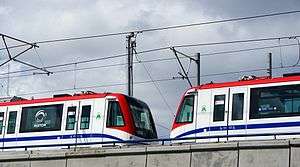
The Dominican Republic has a rapid transit system in Santo Domingo, the country's capital. It is the most extensive metro system in the insular Caribbean and Central American region by length and number of stations. The Santo Domingo Metro is part of a major "National Master Plan" to improve transportation in Santo Domingo as well as the rest of the nation. The first line was planned to relieve traffic congestion in the Máximo Gómez and Hermanas Mirabal Avenue. The second line, which opened in April 2013, is meant to relieve the congestion along the Duarte-Kennedy-Centenario Corridor in the city from west to east. The current length of the Metro, with the sections of the two lines open as of August 2013, is 27.35 kilometres (16.99 mi). Before the opening of the second line, 30,856,515 passengers rode the Santo Domingo Metro in 2012.[174] With both lines opened, ridership increased to 61,270,054 passengers in 2014.
Communications
The Dominican Republic has a well developed telecommunications infrastructure, with extensive mobile phone and landline services. Cable Internet and DSL are available in most parts of the country, and many Internet service providers offer 3G wireless internet service. The Dominican Republic became the second country in Latin America to have 4G LTE wireless service. The reported speeds are from 1 Mbit/s up to 100 Mbit/s for residential services.
For commercial service there are speeds from 256 kbit/s up to 154 Mbit/s. (Each set of numbers denotes downstream/upstream speed; that is, to the user/from the user.) Projects to extend Wi-Fi hot spots have been made in Santo Domingo. The country's commercial radio stations and television stations are in the process of transferring to the digital spectrum, via HD Radio and HDTV after officially adopting ATSC as the digital medium in the country with a switch-off of analog transmission by September 2015. The telecommunications regulator in the country is INDOTEL (Instituto Dominicano de Telecomunicaciones).
The largest telecommunications company is Claro – part of Carlos Slim's América Móvil – which provides wireless, landline, broadband, and IPTV services. In June 2009 there were more than 8 million phone line subscribers (land and cell users) in the D.R., representing 81% of the country's population and a fivefold increase since the year 2000, when there were 1.6 million. The communications sector generates about 3.0% of the GDP.[175] There were 2,439,997 Internet users in March 2009.[176]
In November 2009, the Dominican Republic became the first Latin American country to pledge to include a "gender perspective" in every information and communications technology (ICT) initiative and policy developed by the government.[177] This is part of the regional eLAC2010 plan. The tool the Dominicans have chosen to design and evaluate all the public policies is the APC Gender Evaluation Methodology (GEM).
Electricity
Electric power service has been unreliable since the Trujillo era, and as much as 75% of the equipment is that old. The country's antiquated power grid causes transmission losses that account for a large share of billed electricity from generators. The privatization of the sector started under a previous administration of Leonel Fernández.[117] The recent investment in a 345 kilovolt "Santo Domingo–Santiago Electrical Highway"[178] with reduced transmission losses, is being heralded as a major capital improvement to the national grid since the mid-1960s.
During the Trujillo regime electrical service was introduced to many cities. Almost 95% of usage was not billed at all. Around half of the Dominican Republic's 2.1 million houses have no meters and most do not pay or pay a fixed monthly rate for their electric service.[179]
Household and general electrical service is delivered at 110 volts alternating at 60 Hz. Electrically powered items from the United States work with no modifications. The majority of the Dominican Republic has access to electricity. Tourist areas tend to have more reliable power, as do business, travel, healthcare, and vital infrastructure.[180] Concentrated efforts were announced to increase efficiency of delivery to places where the collection rate reached 70%.[181] The electricity sector is highly politicized. Some generating companies are undercapitalized and at times unable to purchase adequate fuel supplies.[118]
Society
Demographics
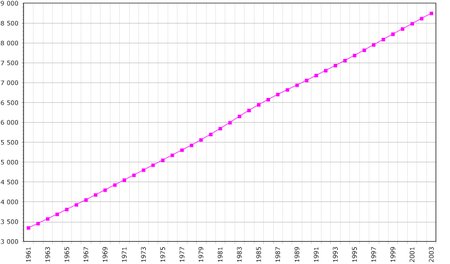
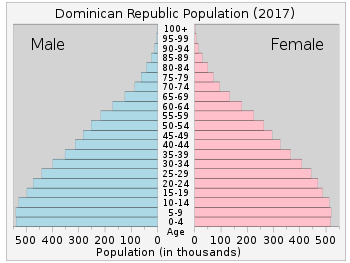
The Dominican Republic's population was 10,627,141 in 2018.[182][183] In 2010, 31.2% of the population was under 15 years of age, with 6% of the population over 65 years of age.[184] There were an estimated 102.3 males for every 100 females in 2020.[4] The annual population growth rate for 2006–2007 was 1.5%, with the projected population for the year 2015 being 10,121,000.[185]
The population density in 2007 was 192 per km² (498 per sq mi), and 63% of the population lived in urban areas.[186] The southern coastal plains and the Cibao Valley are the most densely populated areas of the country. The capital city Santo Domingo had a population of 2,907,100 in 2010.[187]
Other important cities are Santiago de los Caballeros (pop. 745,293), La Romana (pop. 214,109), San Pedro de Macorís (pop. 185,255), Higüey (153,174), San Francisco de Macorís (pop. 132,725), Puerto Plata (pop. 118,282), and La Vega (pop. 104,536). Per the United Nations, the urban population growth rate for 2000–2005 was 2.3%.[187]
Ethnic groups
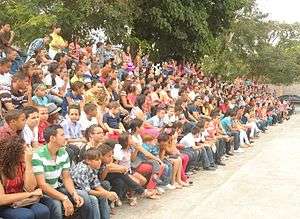
In a 2014 population survey, 70.4% self-identified as mixed (mestizo/indio[lower-alpha 3] 58%, mulatto 12.4%), 15.8% as black, 13.5% as white, and 0.3% as "other".[4][2] Ethnic immigrant groups in the country include West Asians—mostly Lebanese, Syrians, and Palestinians.[188] East Asians, primarily ethnic Chinese and Japanese, can also be found.[188] Europeans are represented mostly by Spanish whites but also with smaller populations of German Jews, Italians, Portuguese, British, Dutch, Danes, and Hungarians.[188][189][190] Some converted Sephardic Jews from Spain were part of early expeditions; only Catholics were allowed to come to the New World.[191] Later there were Jewish migrants coming from the Iberian peninsula and other parts of Europe in the 1700s.[192] Some managed to reach the Caribbean as refugees during and after the Second World War.[193][194][195] Some Sephardic Jews reside in Sosúa while others are dispersed throughout the country. Self-identified Jews number about 3,000; other Dominicans may have some Jewish ancestry because of marriages among converted Jewish Catholics and other Dominicans since the colonial years. Some Dominicans born in the United States now reside in the Dominican Republic, creating a kind of expatriate community.[196]
Languages
The population of the Dominican Republic is mostly Spanish-speaking. The local variant of Spanish is called Dominican Spanish, which closely resembles other Spanish vernaculars in the Caribbean and has similarities to Canarian Spanish. In addition, it has influences from African languages and borrowed words from indigenous Caribbean languages particular to the island of Hispaniola.[197][198] Schools are based on a Spanish educational model; English and French are mandatory foreign languages in both private and public schools,[199] although the quality of foreign languages teaching is poor.[200] Some private educational institutes provide teaching in other languages, notably Italian, Japanese and Mandarin.[201][202]
Haitian Creole is the largest minority language in the Dominican Republic and is spoken by Haitian immigrants and their descendants.[203] There is a community of a few thousand people whose ancestors spoke Samaná English in the Samaná Peninsula. They are the descendants of formerly enslaved African Americans who arrived in the nineteenth century, but only a few elders speak the language today.[204] Tourism, American pop culture, the influence of Dominican Americans, and the country's economic ties with the United States motivate other Dominicans to learn English. The Dominican Republic is ranked 2nd in Latin America and 23rd in the World on English proficiency.[205][206]
| Language | Total % | Urban % | Rural % |
|---|---|---|---|
| Spanish | 98.00 | 97.82 | 98.06 |
| French | 1.19 | 0.39 | 1.44 |
| English | 0.57 | 0.96 | 0.45 |
| Arabic | 0.09 | 0.35 | 0.01 |
| Italian | 0.03 | 0.10 | 0.006 |
| Other language | 0.12 | 0.35 | 0.04 |
Population centres
Religion
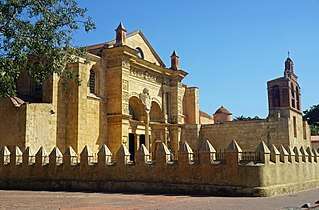
95.0% Christians
2.6% No religion
2.2% Other religions [209]
As of 2014, 57% of the population (5.7 million) identified themselves as Roman Catholics and 23% (2.3 million) as Protestants (in Latin American countries, Protestants are often called Evangelicos because they emphasize personal and public evangelising and many are Evangelical Protestant or of a Pentecostal group). From 1896 to 1907 missionaries from the Episcopal, Free Methodist, Seventh-day Adventist and Moravians churches began work in the Dominican Republic.[210][211][212] Three percent of the 10.63 million Dominican Republic population are Seventh-day Adventists.[213] Recent immigration as well as proselytizing efforts have brought in other religious groups, with the following shares of the population: Spiritist: 2.2%,[214] The Church of Jesus Christ of Latter-day Saints: 1.3%,[215] Buddhist: 0.1%, Bahá'í: 0.1%,[214] Chinese Folk Religion: 0.1%,[214] Islam: 0.02%, Judaism: 0.01%.
The Catholic Church began to lose its strong dominance in the late 19th century. This was due to a lack of funding, priests, and support programs. During the same time, Protestant Evangelicalism began to gain a wider support "with their emphasis on personal responsibility and family rejuvenation, economic entrepreneurship, and biblical fundamentalism".[216] The Dominican Republic has two Catholic patroness saints: Nuestra Señora de la Altagracia (Our Lady Of High Grace) and Nuestra Señora de las Mercedes (Our Lady Of Mercy).
The Dominican Republic has historically granted extensive religious freedom. According to the United States Department of State, "The constitution specifies that there is no state church and provides for freedom of religion and belief. A concordat with the Vatican designates Catholicism as the official religion and extends special privileges to the Catholic Church not granted to other religious groups. These include the legal recognition of church law, use of public funds to underwrite some church expenses, and complete exoneration from customs duties."[217] In the 1950s restrictions were placed upon churches by the government of Trujillo. Letters of protest were sent against the mass arrests of government adversaries. Trujillo began a campaign against the Catholic Church and planned to arrest priests and bishops who preached against the government. This campaign ended before it was put into place, with his assassination.
During World War II a group of Jews escaping Nazi Germany fled to the Dominican Republic and founded the city of Sosúa. It has remained the center of the Jewish population since.[218]
20th century immigration
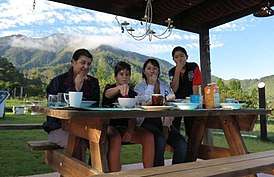
In the 20th century, many Arabs (from Lebanon, Syria, and Palestine),[219] Japanese, and, to a lesser degree, Koreans settled in the country as agricultural laborers and merchants. The Chinese companies found business in telecom, mining, and railroads. The Arab community is rising at an increasing rate and is estimated at 80,000.[219]
In addition, there are descendants of immigrants who came from other Caribbean islands, including St. Kitts and Nevis, Antigua, St. Vincent, Montserrat, Tortola, St. Croix, St. Thomas, and Guadeloupe. They worked on sugarcane plantations and docks and settled mainly in the cities of San Pedro de Macorís and Puerto Plata. Puerto Rican, and to a lesser extent, Cuban immigrants fled to the Dominican Republic from the mid-1800s until about 1940 due to a poor economy and social unrest in their respective home countries. Many Puerto Rican immigrants settled in Higüey, among other cities, and quickly assimilated due to similar culture. Before and during World War II, 800 Jewish refugees moved to the Dominican Republic.[190]
Numerous immigrants have come from other Caribbean countries, as the country has offered economic opportunities. There is an increasing number of Puerto Rican immigrants, especially in and around Santo Domingo; they are believed to number around 10,000.[220][221] There are over 700,000 people of Haitian descent, including a generation born in the Dominican Republic.
Haitian immigration

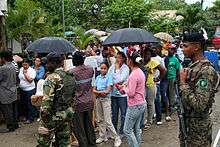
Haiti is the neighboring nation to the Dominican Republic and is considerably poorer, less developed and is additionally the least developed country in the western hemisphere. In 2003, 80% of all Haitians were poor (54% living in abject poverty) and 47.1% were illiterate. The country of nine million people also has a fast growing population, but over two-thirds of the labor force lack formal jobs. Haiti's per capita GDP (PPP) was $1,800 in 2017, or just over one-tenth of the Dominican figure.[4][222]
As a result, hundreds of thousands of Haitians have migrated to the Dominican Republic, with some estimates of 800,000 Haitians in the country,[163] while others put the Haitian-born population as high as one million.[223] They usually work at low-paying and unskilled jobs in building construction and house cleaning and in sugar plantations.[224] There have been accusations that some Haitian immigrants work in slavery-like conditions and are severely exploited.[225]
Due to the lack of basic amenities and medical facilities in Haiti a large number of Haitian women, often arriving with several health problems, cross the border to Dominican soil. They deliberately come during their last weeks of pregnancy to obtain medical attention for childbirth, since Dominican public hospitals do not refuse medical services based on nationality or legal status. Statistics from a hospital in Santo Domingo report that over 22% of childbirths are by Haitian mothers.[226]
Haiti also suffers from severe environmental degradation. Deforestation is rampant in Haiti; today less than 4 percent of Haiti's forests remain, and in many places the soil has eroded right down to the bedrock.[227] Haitians burn wood charcoal for 60% of their domestic energy production. Because of Haiti running out of plant material to burn, some Haitian bootleggers have created an illegal market for charcoal on the Dominican side. Conservative estimates calculate the illegal movement of 115 tons of charcoal per week from the Dominican Republic to Haiti. Dominican officials estimate that at least 10 trucks per week are crossing the border loaded with charcoal.[228]
In 2005, Dominican President Leonel Fernández criticized collective expulsions of Haitians as having taken place "in an abusive and inhuman way."[229] After a UN delegation issued a preliminary report stating that it found a profound problem of racism and discrimination against people of Haitian origin, Dominican Foreign Minister Carlos Morales Troncoso issued a formal statement denouncing it, asserting that "our border with Haiti has its problems[;] this is our reality and it must be understood. It is important not to confuse national sovereignty with indifference, and not to confuse security with xenophobia."[230]
The children of Haitian immigrants are eligible for Haitian nationality,[231] are denied it by Haiti because of a lack of proper documents or witnesses.[232][233][234][235]
Emigration
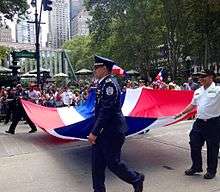
The first of three late-20th century emigration waves began in 1961 after the assassination of dictator Trujillo,[236] due to fear of retaliation by Trujillo's allies and political uncertainty in general. In 1965, the United States began a military occupation of the Dominican Republic to end a civil war. Upon this, the U.S. eased travel restrictions, making it easier for Dominicans to obtain U.S. visas.[237] From 1966 to 1978, the exodus continued, fueled by high unemployment and political repression. Communities established by the first wave of immigrants to the U.S. created a network that assisted subsequent arrivals.[238]
In the early 1980s, underemployment, inflation, and the rise in value of the dollar all contributed to a third wave of emigration from the Dominican Republic. Today, emigration from the Dominican Republic remains high.[238] In 2012, there were approximately 1.7 million people of Dominican descent in the U.S., counting both native- and foreign-born.[239] There was also a growing Dominican immigration to Puerto Rico, with nearly 70,000 Dominicans living there as of 2010. Although that number is slowly decreasing and immigration trends have reversed because of Puerto Rico's economic crisis as of 2016.
There is a significant Dominican population in Spain.[240][241]
Health
In 2020, the Dominican Republic had an estimated birth rate of 18.5 per 1000 and a death rate of 6.3 per 1000.[4]
Education
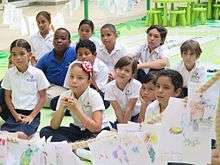
Primary education is regulated by the Ministry of Education, with education being a right of all citizens and youth in the Dominican Republic.[242]
Preschool education is organized in different cycles and serves the 2–4 age group and the 4–6 age group. Preschool education is not mandatory except for the last year. Basic education is compulsory and serves the population of the 6–14 age group. Secondary education is not compulsory, although it is the duty of the state to offer it for free. It caters to the 14–18 age group and is organized in a common core of four years and three modes of two years of study that are offered in three different options: general or academic, vocational (industrial, agricultural, and services), and artistic.
The higher education system consists of institutes and universities. The institutes offer courses of a higher technical level. The universities offer technical careers, undergraduate and graduate; these are regulated by the Ministry of Higher Education, Science and Technology.[243]
Crime
In 2012, the Dominican Republic had a murder rate of 22.1 per 100,000 population.[244] There was a total of 2,268 murders in the Dominican Republic in 2012.[244]
The Dominican Republic has become a trans-shipment point for Colombian drugs destined for Europe as well as the United States and Canada.[4][245] Money-laundering via the Dominican Republic is favored by Colombian drug cartels for the ease of illicit financial transactions.[4] In 2004, it was estimated that 8% of all cocaine smuggled into the United States had come through the Dominican Republic.[246] The Dominican Republic responded with increased efforts to seize drug shipments, arrest and extradite those involved, and combat money-laundering.
The often light treatment of violent criminals has been a continuous source of local controversy. In April 2010, five teenagers, aged 15 to 17, shot and killed two taxi drivers and killed another five by forcing them to drink drain-cleaning acid. On September 24, 2010, the teens were sentenced to prison terms of three to five years, despite the protests of the taxi drivers' families.[247]
Culture

Due to cultural syncretism, the culture and customs of the Dominican people have a European cultural basis, influenced by both African and native Taíno elements, although endogenous elements have emerged within Dominican culture;[248] culturally the Dominican Republic is among the most-European countries in Spanish America, alongside Puerto Rico, Cuba, Central Chile, Argentina, and Uruguay.[248] Spanish institutions in the colonial era were able to predominate in the Dominican culture's making-of as a relative success in the acculturation and cultural assimilation of African slaves diminished African cultural influence in comparison to other Caribbean countries.
Music and sport are of great importance in the Dominican culture, with Merengue and Bachata as the national dance and music, and baseball as the favorite sport.[15]
Visual arts
Dominican art is perhaps most commonly associated with the bright, vibrant colors and images that are sold in every tourist gift shop across the country. However, the country has a long history of fine art that goes back to the middle of the 1800s when the country became independent and the beginnings of a national art scene emerged.
Historically, the painting of this time were centered around images connected to national independence, historical scenes, portraits but also landscapes and images of still life. Styles of painting ranged between neoclassicism and romanticism. Between 1920 and 1940 the art scene was influenced by styles of realism and impressionism. Dominican artists were focused on breaking from previous, academic styles in order to develop more independent and individual styles.
Architecture
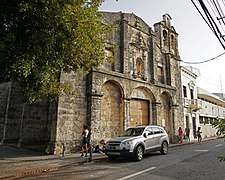
The architecture in the Dominican Republic represents a complex blend of diverse cultures. The deep influence of the European colonists is the most evident throughout the country. Characterized by ornate designs and baroque structures, the style can best be seen in the capital city of Santo Domingo, which is home to the first cathedral, castle, monastery, and fortress in all of the Americas, located in the city's Colonial Zone, an area declared as a World Heritage Site by UNESCO.[249][250] The designs carry over into the villas and buildings throughout the country. It can also be observed on buildings that contain stucco exteriors, arched doors and windows, and red tiled roofs.
The indigenous peoples of the Dominican Republic have also had a significant influence on the architecture of the country. The Taíno people relied heavily on the mahogany and guano (dried palm tree leaf) to put together crafts, artwork, furniture, and houses. Utilizing mud, thatched roofs, and mahogany trees, they gave buildings and the furniture inside a natural look, seamlessly blending in with the island's surroundings.
Lately, with the rise in tourism and increasing popularity as a Caribbean vacation destination, architects in the Dominican Republic have now begun to incorporate cutting-edge designs that emphasize luxury. In many ways an architectural playground, villas and hotels implement new styles, while offering new takes on the old. This new style is characterized by simplified, angular corners and large windows that blend outdoor and indoor spaces. As with the culture as a whole, contemporary architects embrace the Dominican Republic's rich history and various cultures to create something new. Surveying modern villas, one can find any combination of the three major styles: a villa may contain angular, modernist building construction, Spanish Colonial-style arched windows, and a traditional Taino hammock in the bedroom balcony.
Cuisine
Dominican cuisine is predominantly Spanish, Taíno, and African. The typical cuisine is quite similar to what can be found in other Latin American countries.[251] One breakfast dish consists of eggs and mangú (mashed, boiled plantain). Heartier versions of mangú are accompanied by deep-fried meat (Dominican salami, typically), cheese, or both. Lunch, generally the largest and most important meal of the day, usually consists of rice, meat, beans, and salad. "La Bandera" (literally "The Flag") is the most popular lunch dish; it consists of meat and red beans on white rice. Sancocho is a stew often made with seven varieties of meat.
Meals tend to favor meats and starches over dairy products and vegetables. Many dishes are made with sofrito, which is a mix of local herbs used as a wet rub for meats and sautéed to bring out all of a dish's flavors. Throughout the south-central coast, bulgur, or whole wheat, is a main ingredient in quipes or tipili (bulgur salad). Other favorite Dominican foods include chicharrón, yuca, casabe, pastelitos (empanadas), batata, yam, pasteles en hoja, chimichurris, and tostones.
Some treats Dominicans enjoy are arroz con leche (or arroz con dulce), bizcocho dominicano (lit. Dominican cake), habichuelas con dulce, flan, frío frío (snow cones), dulce de leche, and caña (sugarcane). The beverages Dominicans enjoy are Morir Soñando, rum, beer, Mama Juana,[252] batida (smoothie), jugos naturales (freshly squeezed fruit juices), mabí, coffee, and chaca (also called maiz caqueao/casqueado, maiz con dulce and maiz con leche), the last item being found only in the southern provinces of the country such as San Juan.
Music and dance
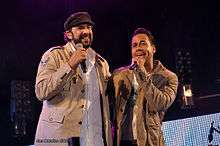
Musically, the Dominican Republic is known for the world popular musical style and genre called merengue,[253]:376–7 a type of lively, fast-paced rhythm and dance music consisting of a tempo of about 120 to 160 beats per minute (though it varies) based on musical elements like drums, brass, chorded instruments, and accordion, as well as some elements unique to the Spanish-speaking Caribbean, such as the tambora and güira.
Its syncopated beats use Latin percussion, brass instruments, bass, and piano or keyboard. Between 1937 and 1950 merengue music was promoted internationally by Dominican groups like Billo's Caracas Boys, Chapuseaux and Damiron "Los Reyes del Merengue," Joseito Mateo, and others. Radio, television, and international media popularized it further. Some well known merengue performers are Wilfrido Vargas, Johnny Ventura, singer-songwriter Los Hermanos Rosario, Juan Luis Guerra, Fernando Villalona, Eddy Herrera, Sergio Vargas, Toño Rosario, Milly Quezada, and Chichí Peralta.
Merengue became popular in the United States, mostly on the East Coast, during the 1980s and 1990s,[253]:375 when many Dominican artists residing in the U.S. (particularly New York) started performing in the Latin club scene and gained radio airplay. They included Victor Roque y La Gran Manzana, Henry Hierro, Zacarias Ferreira, Aventura, and Milly Jocelyn Y Los Vecinos. The emergence of bachata, along with an increase in the number of Dominicans living among other Latino groups in New York, New Jersey, and Florida, has contributed to Dominican music's overall growth in popularity.[253]:378
Bachata, a form of music and dance that originated in the countryside and rural marginal neighborhoods of the Dominican Republic, has become quite popular in recent years. Its subjects are often romantic; especially prevalent are tales of heartbreak and sadness. In fact, the original name for the genre was amargue ("bitterness," or "bitter music,"), until the rather ambiguous (and mood-neutral) term bachata became popular. Bachata grew out of, and is still closely related to, the pan-Latin American romantic style called bolero. Over time, it has been influenced by merengue and by a variety of Latin American guitar styles.
Palo is an Afro-Dominican sacred music that can be found throughout the island. The drum and human voice are the principal instruments. Palo is played at religious ceremonies—usually coinciding with saints' religious feast days—as well as for secular parties and special occasions. Its roots are in the Congo region of central-west Africa, but it is mixed with European influences in the melodies.[254]
Salsa music has had a great deal of popularity in the country. During the late 1960s Dominican musicians like Johnny Pacheco, creator of the Fania All Stars, played a significant role in the development and popularization of the genre.
Dominican rock and Reggaeton are also popular. Many, if not the majority, of its performers are based in Santo Domingo and Santiago.
Fashion
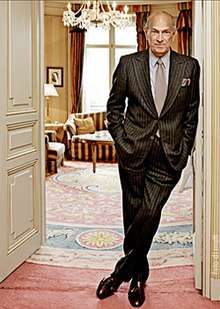
The country boasts one of the ten most important design schools in the region, La Escuela de Diseño de Altos de Chavón, which is making the country a key player in the world of fashion and design. Noted fashion designer Oscar de la Renta was born in the Dominican Republic in 1932, and became a US citizen in 1971. He studied under the leading Spaniard designer Cristóbal Balenciaga and then worked with the house of Lanvin in Paris. By 1963, he had designs bearing his own label. After establishing himself in the US, de la Renta opened boutiques across the country. His work blends French and Spaniard fashion with American styles.[255][256] Although he settled in New York, de la Renta also marketed his work in Latin America, where it became very popular, and remained active in his native Dominican Republic, where his charitable activities and personal achievements earned him the Juan Pablo Duarte Order of Merit and the Order of Cristóbal Colón.[256] De la Renta died of complications from cancer on October 20, 2014.
National symbols
Some of the Dominican Republic's important symbols are the flag, the coat of arms, and the national anthem, titled Himno Nacional. The flag has a large white cross that divides it into four quarters. Two quarters are red and two are blue. Red represents the blood shed by the liberators. Blue expresses God's protection over the nation. The white cross symbolizes the struggle of the liberators to bequeath future generations a free nation. An alternative interpretation is that blue represents the ideals of progress and liberty, whereas white symbolizes peace and unity among Dominicans.[257]
In the center of the cross is the Dominican coat of arms, in the same colors as the national flag. The coat of arms pictures a red, white, and blue flag-draped shield with a Bible, a gold cross, and arrows; the shield is surrounded by an olive branch (on the left) and a palm branch (on the right). The Bible traditionally represents the truth and the light. The gold cross symbolizes the redemption from slavery, and the arrows symbolize the noble soldiers and their proud military. A blue ribbon above the shield reads, "Dios, Patria, Libertad" (meaning "God, Fatherland, Liberty"). A red ribbon under the shield reads, "República Dominicana" (meaning "Dominican Republic"). Out of all the flags in the world, the depiction of a Bible is unique to the Dominican flag.
The national flower is the Bayahibe Rose and the national tree is the West Indian Mahogany.[258] The national bird is the Cigua Palmera or Palmchat ("Dulus dominicus").[259]
The Dominican Republic celebrates Dia de la Altagracia on January 21 in honor of its patroness, Duarte's Day on January 26 in honor of one of its founding fathers, Independence Day on February 27, Restoration Day on August 16, Virgen de las Mercedes on September 24, and Constitution Day on November 6.
Sports
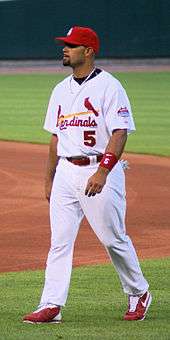
Baseball is by far the most popular sport in the Dominican Republic.[253]:59 The country has a baseball league of six teams. Its season usually begins in October and ends in January. After the United States, the Dominican Republic has the second highest number of Major League Baseball (MLB) players. Ozzie Virgil Sr. became the first Dominican-born player in the MLB on September 23, 1956. Juan Marichal, Pedro Martínez, and Vladimir Guerrero are the only Dominican-born players in the Baseball Hall of Fame.[260] Other notable baseball players born in the Dominican Republic are José Bautista, Adrián Beltré, George Bell, Robinson Canó, Rico Carty, Bartolo Colón, Nelson Cruz, Edwin Encarnación, Ubaldo Jiménez, Francisco Liriano, David Ortiz, Plácido Polanco, Albert Pujols, Hanley Ramírez, Manny Ramírez, José Reyes, Sammy Sosa, and Miguel Tejada. Felipe Alou has also enjoyed success as a manager[261] and Omar Minaya as a general manager. In 2013, the Dominican team went undefeated en route to winning the World Baseball Classic.
In boxing, the country has produced scores of world-class fighters and several world champions,[262] such as Carlos Cruz, his brother Leo, Juan Guzman, and Joan Guzman. Basketball also enjoys a relatively high level of popularity. Tito Horford, his son Al, Felipe Lopez, and Francisco Garcia are among the Dominican-born players currently or formerly in the National Basketball Association (NBA). Olympic gold medalist and world champion hurdler Félix Sánchez hails from the Dominican Republic, as does NFL defensive end Luis Castillo.[263]
Other important sports are volleyball, introduced in 1916 by U.S. Marines and controlled by the Dominican Volleyball Federation, taekwondo, in which Gabriel Mercedes won an Olympic silver medal in 2008, and judo.[264]
See also
- Index of Dominican Republic-related articles
- Outline of the Dominican Republic
Notes
- Note: respondents self-identified their race; the term "indio" in the Dominican Republic is not associated with people of indigenous ancestry but people of mixed ancestry or skin color between light and dark.[1]
- Terrenos comuneros arose because of "scarce population, low value of the land, the absence of officials qualified to survey the lands, and the difficulty of dividing up the ranch in such a way that each would receive a share of the grasslands, forests, streams, palm groves, and small agricultural plots that, only when combined, made possible the exploitation of the ranch." (Hoetink, The Dominican People: Notes for a Historical Sociology transl. Stephen Ault Pg. 83 (Johns Hopkins Press: Baltimore, 1982)
- The term "indio" in the Dominican Republic is not associated with people of indigenous ancestry but people of mixed ancestry or skin color between light and dark
References
- "Central America :: Dominican Republic — The World Factbook". Central Intelligence Agency. Retrieved January 22, 2020.
- "Dominican Republic". Encyclopedia Britannica. sec. The People. Retrieved March 17, 2020.
- Roorda, Eric Paul (April 28, 2016). Historical Dictionary of the Dominican Republic. Rowman & Littlefield. ISBN 9780810879065 – via Google Books.
- "Central America :: Dominican Republic". CIA World Factbook. Central Intelligence Agency. Retrieved February 19, 2020.
- Historia de la República Dominicana. Ediciones Doce Calles, S.L. 2010. p. 409. ISBN 978-84-00-09240-5. Retrieved July 1, 2013.
- Incháustegui, Joaquín Marino (April 5, 2008). Historia de Santo Domingo, Volumen 2. University of Virginia.
- "12 de julio de 1924, una fecha relegada al olvido". Diario Libre. August 18, 2012. Retrieved September 24, 2014.
- "Constitución de la República Dominicana, Votada y Proclamada por la Asamblea Nacional en fecha trece (13) de junio de 2015. Gaceta Oficial No. 10805 del 10 de julio de 2015" (PDF) (in Spanish). Santo Domingo: Judicial Branch (Poder Judicial). Archived from the original (PDF) on March 28, 2018. Retrieved September 11, 2018.
- "Proclaman nueva Constitución en República Dominicana que permitirá reelección presidente". El Comercio (in Spanish). EFE. June 13, 2015. Retrieved September 11, 2018.
- "Estimaciones y proyecciones de la población total" (xlsx). Oficina Nacional de Estadística. Retrieved April 25, 2018.
- "Población - IX Censo Nacional de Población y Vivienda 2010". Oficina Nacional de Estadística (ONE). Retrieved June 20, 2020.
- International Monetary Fund. "Gross domestic product based on purchasing-power-parity (PPP) valuation of country GDP". Retrieved January 14, 2020.
- "GINI index (World Bank estimate) - Dominican Republic". World Bank. Retrieved March 30, 2020.
- "2018 Human Development Report". United Nations Development Programme. 2017. Retrieved September 14, 2018.
- "Embassy of the Dominican Republic, in the United States". Archived from the original on June 26, 2015. Retrieved February 27, 2009.
- Dardik, Alan, ed. (2016). Vascular Surgery: A Global Perspective. Springer. p. 341. ISBN 978-3-319-33745-6.
- Josh, Jagran, ed. (2016). "Current Affairs November 2016 eBook". p. 93.
- "Dominican Republic | Data". data.worldbank.org. Retrieved April 28, 2016.
- "Estimaciones y Proyecciones de la Población Dominicana por Regiones, Provincias, Municipios y Distritos Municipales, 2008". Archived from the original on May 11, 2011. Retrieved December 25, 2008.
- Brown, Isabel Zakrzewski. (1999). Culture and customs of the Dominican Republic. Westport, Conn.: Greenwood Press. ISBN 0-313-30314-2. OCLC 41256263.
- Franco, César A. "La guerra de la Restauración Dominicana, el 16 de agosto de 1863" [The Dominican Restoration War, 16 August 1863] (PDF) (in Spanish). dgii.gov.do. Archived from the original (PDF) on June 24, 2015.
- Guerrero, Johnny (August 16, 2011). "La Restauración de la República como referente histórico" [The Restoration of the Republic as an historical reference] (in Spanish). El Día. Retrieved August 23, 2016.
- Sagas, Ernesto. "An Apparent Contradiction? Popular Perceptions of Haiti and the Foreign Policy of the Dominican Republic". Lehman College (Presented at the Sixth Annual Conference of the Haitian Studies Association, Boston, MA). Retrieved December 30, 2014.
- "Antonio Guzmán | Ministerio Administrativo de la Presidencia". mapre.gob.do. Retrieved August 4, 2020.
- Fox, Ben; Ezequiel Abiu Lopez (May 20, 2012). "Dominican Republic Elections: Ex-President Hipolito Mejia Challenges Danilo Medina". Huffington Post. Archived from the original on January 31, 2016.
- "CIA – The World Factbook – Rank Order – GDP (purchasing power parity)". Retrieved February 27, 2009.
- "Dominican Republic". www.worldbank.org. Retrieved April 28, 2016.
- "Dominican Republic Overview". World Bank. Retrieved April 29, 2016.
- "Dominican economy grows 7.4% in first half, paced by construction". Dominican Today. Archived from the original on August 26, 2016. Retrieved August 27, 2016.
- "World's 10 Largest Gold Mines by Production | INN". July 31, 2019.
- "World Top 20 Gold: Countries, Companies and Mines". Archived from the original on September 26, 2017. Retrieved September 27, 2017.
- UNWTO Tourism Highlights: 2018 Edition | World Tourism Organization. 2018. doi:10.18111/9789284419876. ISBN 9789284419876.
- "Consulate-General of the Dominican Republic Bangkok Thailand". Retrieved February 27, 2009.
- Baker, Christopher P.; Mingasson, Gilles (2008). Dominican Republic. National Geographic Books. p. 190. ISBN 978-1-4262-0232-2.
- "Colonial City of Santo Domingo". UNESCO World Heritage Centre. Retrieved August 24, 2016.
- UNESCO around the World | República Dominicana. Unesco.org (November 14, 1957). Retrieved on 2014-04-02.
- "Gentilicio Dominicano: Origen Etimológico & Motivaciones Históricas. Por Giancarlo D'Alessandro. Mi Bandera es Tu Bandera: Proyecto de Exposiciones Fotográficas Itinerantes por Frank Luna". www.laromanabayahibenews.com. Retrieved September 13, 2015.
- "Dominican Republic – The first colony". Country Studies. Library of Congress; Federal Research Division. Retrieved June 19, 2008.
- Hand Book of Santo Domingo: Bulletin, Issue 52. U.S. Government Printing Office, 1892. Digitized 14 August 2012. p. 3. "...the Republic of Santo Domingo or República Dominicana (Dominican Republic) as it is officially designated."
- Kraft, Randy (August 27, 2000). "Paradise on the Beach: Resorts Are Beautiful in Caribbean's Punta Cana, But Poverty Is Outside the Gates". The Morning Call. Archived from the original on September 21, 2013.
- Luna Calderón, Fernando (December 2002). "ADN Mitocondrial Taíno en la República Dominicana" [Taíno Mitochondrial DNA in the Dominican Republic] (PDF). Kacike (in Spanish) (Special). ISSN 1562-5028. Archived from the original (PDF) on October 1, 2008.
- "Dominican Republic". Encarta. Microsoft Corporation. Archived from the original on November 14, 2007. Retrieved June 6, 2007.
- Royal, Robert (Spring 1992). "1492 and Multiculturalism". The Intercollegiate Review. 27 (2): 3–10. Archived from the original on February 16, 2009.
- Rawley, James A.; Behrendt, Stephen D. (2005). The Transatlantic Slave Trade: A History. University of Nebraska Press. p. 49. ISBN 978-0-8032-3961-6.
- Keegan, William. "Death Toll". Millersville University, from Archaeology (January/February 1992, p. 55). Archived from the original on March 21, 2008. Retrieved June 19, 2008.
- Henige, David (1998). Numbers from nowhere: the American Indian contact population debate. University of Oklahoma Press. p. 174. ISBN 978-0-8061-3044-6.
- Roberto Cassá (1992). Los Indios de Las Antillas. Editorial Abya Yala. pp. 126–. ISBN 978-84-7100-375-1. Retrieved August 15, 2012.
- Wilson, Samuel M. (1990). Hispaniola: Caribbean Chiefdoms in the Age of Columbus. Univ. of Alabama Press. p. 110. ISBN 978-0-8173-0462-1.
- Anglería, Pedro Mártir de (1949). Décadas del Nuevo Mundo, Tercera Década, Libro VII (in Spanish). Buenos Aires: Editorial Bajel.
- "What Became of the Taíno?". Smithsonian October 2011
- "History of Smallpox – Smallpox Through the Ages". Texas Department of State Health Services.
- Ferbel Azcarate, Pedro J. (December 2002). "Not Everyone Who Speaks Spanish is from Spain: Taíno Survival in the 21st Century Dominican Republic" (PDF). KACIKE: The Journal of Caribbean Amerindian History and Anthropology (Special). ISSN 1562-5028. Archived from the original (PDF) on June 17, 2004. Retrieved September 24, 2009.
- Guitar, Lynne (December 2012). "Documenting the Myth of Taíno Extinction" (PDF). Kacike (Special). ISSN 1562-5028. Retrieved August 24, 2016.
- Martínez Cruzado, Juan Carlos (December 2002). "The Use of Mitochondrial DNA to Discover Pre-Columbian Migrations to the Caribbean: Results for Puerto Rico and Expectations for the Dominican Republic" (PDF). Kacike (Special). ISSN 1562-5028. Archived from the original (PDF) on November 5, 2016. Retrieved August 24, 2016.
- "Taino Caves, the Photo Essay, by Lynne Guitar". Archived from the original on June 7, 2007. Retrieved October 8, 2008.
- O'Halloran, Jacinta (January 1, 2007). Fodor's Budapest. Fodor's Travel Publications. ISBN 9781400017409.
- Christopher Columbus. Catholictradition.org. Retrieved on April 2, 2014.
- Columbus, Ferdinand (1959). The Life of the Admiral Christopher Columbus by his son Ferdinand. New Brunswick: Rutgers, The State University. pp. 76–77, 83, 87.
- Floyd, Troy (1973). The Columbus Dynasty in the Caribbean, 1492–1526. Albuquerque: University of New Mexico Press. pp. 44, 50, 57–58, 74.
- Pons, Frank (1995). The Dominican Republic, A National History. New Rochelle: Hispaniola Books. pp. 33–37. ISBN 978-1885509017.
- Sugar Cane: Past and Present, Peter Sharpe "Archived copy". Archived from the original on May 18, 2008. Retrieved July 15, 2008.CS1 maint: archived copy as title (link)
- Knight, Franklin W., ed. (1997). General history of the Caribbean (1. publ. ed.). London: Unesco. p. 48. ISBN 978-92-3-103146-5. Retrieved April 30, 2015.
- "Dominican Republic – THE FIRST COLONY". Retrieved August 16, 2016.
- Peasants and Religion: A Socioeconomic Study of Dios Olivorio and the Palma Sola Religion in the Dominican Republic. p. 565.
- Ricourt, Milagros (2016). The Dominican Racial Imaginary: Surveying the Landscape of Race and Nation in Hispaniola. Rutgers University Press. p. 57.
- Scheina, Robert L. (2003). Latin America's Wars: Volume 1. Potomac Books.
- An Islandwide Struggle for Freedom: Revolution, Emancipation, and Reenslavement in Hispaniola, 1789-1809. p. 93.
- "A Brief History of Dominican Republic". SpainExchange Country Guide.
- Bethell, Leslie (1984). The Cambridge History of Latin America: Volume 3. Cambridge University Press. pp. 245–48.
- H. Hoetink (May 29, 1986). "The Dominican Republic c. 1870–930". In Leslie Bethell (ed.). The Cambridge History of Latin America. V, Circa 1870 to 1930. Cambridge University Press. p. 287. ISBN 978-0-521-24517-3.
- Guitar, Lynne. "History of the Dominican Republic". Hola.com. Archived from the original on June 1, 2007. Retrieved May 29, 2007.
- Matibag, Eugenio (2003). Haitian-Dominican Counterpoint: Nation, State, and Race on Hispaniola. Macmillan. ISBN 978-0-312-29432-8.
- Moya Pons, Frank (1998). The Dominican Republic: A National History (August 1, 1998 ed.). Markus Wiener Publishers; 2nd edition. p. 543. ISBN 978-1-55876-191-9.
- Francisco del Rosario Sánchez One of the Padres de la Patria / Fathers of the Patriotism – Colonial Zone-Dominican Republic (DR) – Retrieved November 3, 2012.
- "The Siblings of Hispaniola: Political Union and Separation of Haiti and Santo Domingo, 1822–1844" (PDF). Retrieved August 4, 2020.
- Bethell, Leslie (1984). The Cambridge History of Latin America: Volume 3. Cambridge University Press. p. 270.
- Hazard, Samuel (1873). Santo Domingo, Past And Present; With A Glance At Haytl. p. 249.
- Baur, John E. (1949). "Faustin Soulouque, Emperor of Haiti His Character and His Reign": 143. Cite journal requires
|journal=(help) - Hand Book of Santo Domingo: Bulletin, Issue 52. U.S. Government Printing Office, 1892. Digitized 14 August 2012. p. 3. "...the Republic of Santo Domingo or República Dominicana (Dominican Republic) as it is officially designated."
- Haitian-Dominican Counterpoint: Nation, State, and Race on Hispaniola. p. 114.
- Cross Beras, Julio A. (1984). Sociedad y desarrollo en República Dominicana, 1844–1899. CENAPEC. ISBN 978-84-89525-17-7.
- Bulmer, Martin; Solomos, John, eds. (2014). Gender, Race and Religion: Intersections and Challenges. Routledge.
- Howard, David. Coloring the Nation: Race and Ethnicity in the Dominican Republic. p. 28.
- Charles Nach Mback. Haïti République Dominicaine-Une Île pour deux (1804-1916).
- "UNITED STATES ARMY UNILATERAL AND COALITION OPERATIONS IN THE 1965 DOMINICAN REPUBLIC INTERVENTION" (PDF). Retrieved August 4, 2020.
- Waugh, Joan (2009). U.S. Grant: American Hero, American Myth. UNC Press. p. 137. ISBN 978-0-8078-3317-9.
- Hidalgo, Dennis (1997). "Charles Sumner and the Annexation of the Dominican Republic". Itinerario. 21 (2): 51–66. doi:10.1017/S0165115300022841.
- "U.S. Senate: Art & History Home > Origins & Development > Powers & Procedures > Treaties". United States Senate. Retrieved October 17, 2008.
- Atkins, G. Pope; Larman Curtis Wilson (1998). The Dominican Republic and the United States: From Imperialism to Transnationalism. University of Georgia Press. p. 27. ISBN 978-0-8203-1931-5.
- "Dominican Republic – Ulises Heureaux, 1882–99". Library of Congress; Federal Research Division. Retrieved December 23, 2007.
- Langley, Lester D. (2002). The Banana Wars. Rowman & Littlefield. p. 20. ISBN 978-0-8420-5047-0.
- Hall, Michael R. (2000). Sugar and Power in the Dominican Republic. Greenwood Press. ISBN 978-0-313-31127-7.
- "Dominican Republic – Renewed conflict, 1899–1916". Country Studies. Library of Congress; Federal Research Division. Retrieved October 19, 2008.
- "Dominican Republic: Occupation by the United States, 1916–1924". Country Studies. Library of Congress; Federal Research Division. Retrieved May 29, 2007.
- "THE CARIBBEAN WAR. The United States in the Caribbean, 1898–1998" (PDF). University of South Florida.
- "Dominican Republic – The era of Trujillo". Country Studies. Library of Congress; Federal Research Division.
- Javier A. Galván (2012). Latin American Dictators of the 20th Century: The Lives and Regimes of 15 Rulers. McFarland. p. 49. ISBN 978-1-4766-0016-1.
- Marley, David F. (2005). Historic Cities of the Americas: An Illustrated Encyclopedia. ABC-CLIO. p. 103. ISBN 978-1-57607-027-7. Retrieved August 24, 2016.
- "Rafael Trujillo: Killer File". Moreorless.com. August 11, 2006. Archived from the original on August 21, 2006. Retrieved May 29, 2007.
- Wucker, Michele. "Why the Cocks Fight: Dominicans, Haitians and the Struggle for Hispaniola". Windows on Haiti. Retrieved December 26, 2007.
- Corbett, Robert (July 24, 1999). "#219: Temwayaj Kout Kouto, 1937: Eyewitnesses to the Genocide (fwd)". webster.edu. Archived from the original on October 10, 2007.
- Sagas, Ernesto (October 1994). "An Apparent Contradiction? – Popular Perceptions of Haiti and the Foreign Policy of the Dominican Republic". Sixth Annual Conference of the Haitian Studies Association, Boston, Massachusetts. Webster University. Archived from the original on November 30, 2007. Retrieved June 6, 2007.
- "Trying to Topple Trujillo". Time Magazine. September 5, 1960. Retrieved December 26, 2007.
- Ameringer, Charles D. (January 1, 1990). U.S. Foreign Intelligence: The Secret Side of American history (1990 ed.). Lexington Books. ISBN 978-0669217803.
- "The Kaplans of the CIA – Approved For Release 2001/03/06 CIA-RDP84-00499R001000100003-2" (PDF). Central Intelligence Agency. November 24, 1972. pp. 3–6. Retrieved January 17, 2019.
- Bowles, Chester (June 3, 1961). "FOREIGN RELATIONS OF THE UNITED STATES, 1961–1963, VOLUME XII, AMERICAN REPUBLICS 310. Memorandum by the Under Secretary of State (Bowles) NOTES ON CRISIS INVOLVING THE DOMINICAN REPUBLIC". United States Department of State.
- Kross, Peter (December 9, 2018). "The Assassination of Rafael Trujillo". Sovereign Media. Archived from the original on August 28, 2018. Retrieved January 17, 2019.
- Dominican Truce. Cease-Fire Brings Calm To Island, 1965/05/06. Universal Newsreel. 1965. Retrieved February 22, 2012.
- "Dominican Revolution, Cuba – Events of 1965 – Year in Review". UPI.com. Archived from the original on May 19, 2009. Retrieved March 24, 2009.
- "Dominican Republic – Civil War and United States Intervention, 1965". Library of Congress.
- Pedraja, René De La (April 9, 2013). Wars of Latin America, 1948–1982: The Rise of the Guerrillas. ISBN 9780786470150.
- "11,000 víctimas en Doce Años de JB" (in Spanish). Listín Diario. March 10, 2013.
- Quiroz, Fernando (March 10, 2013). "Comisión de la Verdad por asesinatos y desapariciones" (in Spanish). Santo Domingo: Listín Diario.
- Pope Atkins, G. The Dominican Republic and the United States: From Imperialism to Transnationalism. p. 205.
- Rohter, Larry (March 28, 1996). "Longtime Ruler Overshadows Dominican Republic Election". The New York Times. Retrieved November 21, 2018.
- Rohter, Larry (July 2, 1996). "Lawyer Raised in New York to Lead Dominican Republic". The New York Times. Retrieved November 21, 2018.
- Patterson, Claudia (October 4, 2004). "President Leonel Fernández: Friend or Foe of Reform?". Council on Hemispheric Affairs. Archived from the original on November 7, 2008.
- "U.S. Relations With the Dominican Republic". United States Department of State. October 22, 2012.
- Corcino, Panky. "Suicidio en OISOE destapa gran escándalo de corrupción gestión Medina". Archived from the original on April 4, 2018. Retrieved April 3, 2018.
- Redacción. "Súper Tucanos y Sobornos – Cronología del Proceso de Adquisición DJ4658885". Archived from the original on April 14, 2018. Retrieved January 23, 2017.
- "Don Pedro Mir Valentín, Poeta Nacional Dominicano". www.educando.edu.do. Retrieved December 13, 2019.
- "Pedro Mir Biografia | República Dominicana". Conectate.com.do (in Spanish). July 11, 2019. Retrieved December 13, 2019.
- "Pedro Mir". Biografia y vidas (in Spanish). December 13, 2019. Retrieved December 13, 2019.
- "Emilio Rodríguez Demorizi". www.diariolibre.com (in Spanish). Retrieved December 13, 2019.
- Clas, Bredi. "Emilio Rodríguez Demorizi" (PDF). Academia Dominicana de Historia.
- "¿En qué año nació Emilio Rodríguez Demorizi? (1-2) - Acento - El más ágil y moderno diario electrónico de la República Dominicana". Acento (in Spanish). August 31, 2018. Retrieved December 13, 2019.
- "Instituto Tecnológico de Santo Domingo - INTEC - Emilio Rodríguez Demorizi". www.intec.edu.do. Retrieved December 13, 2019.
- "Trayectorias Literarias: Manuel del Cabral". Retrieved December 13, 2019.
- "Manuel del Cabral – Solo Literatura". sololiteratura.com. Retrieved December 13, 2019.
- "Héctor Incháustegui Cabral: Introducción a "Poesía Sorprendida"". www.literatura.us. Retrieved December 13, 2019.
- "Nace Héctor Incháustegui, poeta, profesor, ensayista y animador cultural – El Nacional". elnacional.com.do. Retrieved December 13, 2019.
- "Hector Inchaustegui Cabral". opac.pucmm.edu.do. Retrieved December 13, 2019.
- "Biografia de Héctor Incháustegui Cabral". www.biografiasyvidas.com. Retrieved December 13, 2019.
- "ÁMBITO CULTURAL ::: Miguel Alfonseca". www.cielonaranja.com. Retrieved December 13, 2019.
- "Miguel Alfonseca". El Nuevo Diario (República Dominicana) (in Spanish). November 29, 2018. Retrieved December 13, 2019.
- "René del Risco, poesía y angustia de la ciudad". Revista Global (in Spanish). November 7, 2017. Retrieved December 13, 2019.
- "BIOGRAFIA – Fundacion Rene del Risco" (in Spanish). Retrieved December 13, 2019.
- "René del Risco Bermúdez". Educando (in Spanish). December 15, 2015. Retrieved December 13, 2019.
- "El Hombrecito". December 19, 2014. Archived from the original on December 19, 2014. Retrieved February 14, 2020.
- "Frank Baez". Words Without Borders. Retrieved February 14, 2020.
- II, Louis Lucero (May 10, 2018). "Junot Díaz Steps Down as Pulitzer Chairman Amid Review of Misconduct Allegations". The New York Times. ISSN 0362-4331. Retrieved February 14, 2020.
- Diario, Listin (February 1, 2019). "Alcaldía del DN y políticos destacan aportes de jóvenes". listindiario.com (in Spanish). Retrieved February 14, 2020.
- site. "ADN reconoce a decenas de jóvenes". www.lainformacion.com.do (in Spanish). Retrieved February 14, 2020.
- "PressReader.com - Your favorite newspapers and magazines". www.pressreader.com. Retrieved February 14, 2020.
- United States Library of Congress (May 24, 2007). "Dominican Republic – Climate". Country Studies US. Retrieved October 27, 2009.
- "Atlantic hurricane best track (HURDAT version 2)" (Database). United States National Hurricane Center. May 25, 2020.
- "FEDOMU aclara confusión sobre elecciones para el año 2016". El Nuevo Diario (in Spanish). June 8, 2012. Archived from the original on July 19, 2014. Retrieved July 19, 2014.
- Brown, Tom (May 17, 2008). "Election propels Dominican president to third term". Reuters. Archived from the original on August 26, 2014.
- "Leonel declina ser candidato, pero entiende habría una vía". www.diariolibre.com. Retrieved March 18, 2016.
- "Junta Central Electoral de la República Dominicana (JCE) │ Portada > Institucional > Publicaciones Oficiales > Resultados Electorales". jce.gob.do. Archived from the original on March 18, 2016. Retrieved March 18, 2016.
- "PRM será Moderno y no "Mayoritario", como aspiraba". 7dias.com.do. Archived from the original on March 7, 2016. Retrieved March 18, 2016.
- "Encuesta Gallup: Danilo aumenta preferencia a 60.3%; Abinader baja a 30.6%". hoy.com.do (in Spanish). Retrieved March 18, 2016.
- Childress, Sarah (August 31, 2011). "DR to Haitians: get lost". pri.org. Global Post. Retrieved August 24, 2016.
- "CAFTA-DR (Dominican Republic-Central America FTA) | United States Trade Representative". ustr.gov. Retrieved February 8, 2017.
- "Caribbean – Trade – European Commission". ec.europa.eu. Retrieved February 8, 2017.
- IISS 2018, pp. 402
- "Chapter XXVI: Disarmament – No. 9 Treaty on the Prohibition of Nuclear Weapons". United Nations Treaty Collection. July 7, 2017.
- "Dominican Republic". World Bank. Retrieved April 29, 2016.
- "Data – Country Groups". World Bank. Archived from the original on March 18, 2011. Retrieved October 20, 2008.
- International Labour Organization. "Average Wage". Exchange rate: 45.4691 DOP per USD. Retrieved July 24, 2016.
- "Sector Real". Central Bank of the Dominican Republic (Banco Central de la República Dominicana). Archived from the original on April 16, 2016. Retrieved April 29, 2016.
- "¿Quiénes Somos?". Bolsa de Valores de la República Dominicana. Retrieved March 3, 2016.
- Diógenes Pina (March 21, 2007). "Dominican Republic: Deport Thy (Darker-Skinned) Neighbour". Inter Press Service (IPS). Archived from the original on January 9, 2008. Retrieved January 14, 2008.
- "United States – Selected Population Profile in the United States (Dominican (Dominican Republic))". 2008 American Community Survey 1-Year Estimates. U.S. Census Bureau. Archived from the original on February 12, 2020. Retrieved January 10, 2010.
- "Fernández Zucco anuncia celebración Semana Internacional de la Energía" (in Spanish). Archived from the original on January 16, 2009. Retrieved October 20, 2008.
- Tony Smith (May 23, 2003). "Fallen Banker Courted in Jail Cell". The New York Times. Santo Domingo. Archived from the original on April 22, 2014. Retrieved May 11, 2014.
- "List of Goods Produced by Child Labor or Forced Labor" (PDF). U.S. Department of Labor. 2011. Archived from the original (PDF) on January 15, 2014.
- Helen Chapin Metz, ed. (December 1999). Dominican Republic and Haiti : country studies. Washington, DC: Federal Research Division, Library of Congress. ISBN 978-0-8444-1044-9. Lay summary.
- Kevin Bales; et al. "Dominican Republic". The Global Slavery Index 2016. The Minderoo Foundation Pty Ltd. Archived from the original on March 14, 2018. Retrieved March 14, 2018.
- "Dominican Republic sugar cane slave ring exposed by priest". Fox News. June 1, 2017. Retrieved March 14, 2018.
- Turnham, Steve. "Is sugar production modern day slavery?". CNN. Retrieved March 14, 2018.
- "(DOP/USD) Dominican Republic Pesos to United States Dollars Rate". XE.com. Retrieved November 28, 2010., "Peso to Yen". XE.com. and "Peso to Euro". XE.com.
- "XE: Convert USD/DOP. United States Dollar to Dominican Republic Peso". Retrieved September 14, 2019.
- "Estadísticas de peaje y tiempo de recorrido al 2013" [Statistics of tolls and times of route 2013] (PDF). opret.gob.do (in Spanish). September 2013. p. 2. Retrieved September 17, 2013.
- "Dice el 80,6 por ciento de los dominicanos tiene teléfonos" [80.6 percent of Dominicans have phones] (in Spanish). listindiario.com. June 5, 2009. Archived from the original on January 16, 2013.
- "Indicadores Telefonicos 2009". Indotel. Archived from the original on February 26, 2011. Retrieved June 5, 2009.
- Indotel garantiza igualdad de género en proyectos tecnológicos realiza en todo el país Archived May 3, 2011, at the Wayback Machine. elnuevodiario.com.do. November 16, 2009
- "Dominican Republic north-south power grid almost finished (Correct)". Dominican Today. April 29, 2009. Archived from the original on October 15, 2015. Retrieved October 15, 2015.
- "Dominican Government hints at blackout to justify electricity hike". Dominican Today. June 1, 2006. Archived from the original on June 3, 2009.
- EDESUR agrega 3,500 familias a 24 Horas de Luz. Cdeee.gov.do. Retrieved on September 22, 2011.
- "Los apagones toman fuerza en circuitos de barrios PRA" [Blackouts are intensifying in neighborhood power sectors] (in Spanish). April 11, 2007. Archived from the original on September 27, 2007. Retrieved May 24, 2007.
- ""World Population prospects – Population division"". population.un.org. United Nations Department of Economic and Social Affairs, Population Division. Retrieved November 9, 2019.
- ""Overall total population" – World Population Prospects: The 2019 Revision" (xslx). population.un.org (custom data acquired via website). United Nations Department of Economic and Social Affairs, Population Division. Retrieved November 9, 2019.
- "World Population Prospects: The 2012 Revision" (PDF). United Nations Department of Economic and Social Affairs. 2013. p. 254. Archived from the original (PDF) on November 5, 2016. Retrieved August 24, 2016.
- "World Population Prospects: The 2006 Revision, Highlights, Working Paper No. ESA/P/WP.202" (PDF). United Nations, Department of Economic and Social Affairs, Population Division. 2007. Retrieved January 13, 2008.
- "Población en Tiempo Real" (in Spanish). Consejo Nacional de Población y Familia. Archived from the original on August 8, 2011. Retrieved January 13, 2008.
- Dominican Republic – Population. Encyclopedia of the Nations
- Levinson, David (1998). Ethnic groups worldwide: a ready reference handbook. Greenwood Publishing Group. pp. 345–6. ISBN 978-1-57356-019-1.
- "Brits Abroad". BBC News. December 6, 2006. Retrieved August 3, 2010.
- "CCNY Jewish Studies Class to Visit Dominican Village that Provided Refuge to European Jews During World War II" (Press release). City College of New York. November 13, 2006. Archived from the original on May 10, 2011. Retrieved August 3, 2010.
- "Christian-Jewish Relations: The Inquisition". Encyclopaedia Judaica. Retrieved May 15, 2013.
- "Dominican Republic". Encyclopaedia Judaica. 2008. Retrieved May 15, 2013.
- Levy, Lauren (January 6, 1995). "The Dominican Republic's Haven for Jewish Refugees". Jerusalem Post.
- "Jews in Dominican Republic". Encyclopaedia Judaica. 6. 1971. Archived from the original on March 10, 2013.
- "Dominican Republic-Jews". biblediscovered.com. Archived from the original on October 1, 2013. Retrieved May 15, 2013.
- "American Citizens Living Abroad by Country" (PDF). US State Department. Archived from the original (PDF) on February 25, 2011. Retrieved August 3, 2010.
- Henríquez Ureña, Pedro (1940). El Español en Santo Domingo (in Spanish). Buenos Aires: Instituto de Filología de la Universidad de Buenos Aires.
- Deive, Carlos Esteban (2002). Diccionario de dominicanismos. Santo Domingo: Librería La Trinitaria. pp. 9–16. ISBN 978-9993439073.
- Guía Didáctica. Inicial (PDF). Ministry of Education, Dominican Republic. I. 2010. ISBN 978-99934-43-26-1. Archived from the original (PDF) on August 3, 2011.
- Apolinar, Bethania (August 2, 2015). "Enseñanza del inglés es "pobre" en escuelas" [Teaching of English is "poor" in schools] (in Spanish). Santo Domingo: Listin Diario. Retrieved August 24, 2016.
- "Especialistas en idiomas" [Language specialists] (in Spanish). Hoy digital. June 28, 2006. Retrieved August 24, 2016.
- Pujols, Daniela (April 23, 2015). "Colegio Chino: Cuando el idioma no es limitante" [Chinese schools: When language is not a limitation] (in Spanish). Listin Diario. Retrieved August 24, 2016.
- Baker, Colin; Prys Jones, Sylvia, eds. (1998). Encyclopedia of Bilingualism and Bilingual Education. p. 389. ISBN 978-1-85359-362-8. Retrieved November 20, 2015.
- Davis, Martha Ellen (2011). "La Historia de Los Inmigrantes Afro-Americanos Y Sus Iglesias En Samaná Según El Reverendo Nehemiah Willmore". Boletín del Archivo General de la Nación. 36 (129): 237–45.
- Which countries are best at English as a second language?, World Economic Forum. Retrieved on July 10, 2017.
- EF English Proficiency Index – Dominican Republic, EF Education First. Retrieved on July 10, 2017.
- Nicasio Rodríguez, Irma; Jesús de la Rosa (1998). Historia, Metodología y Organización de los Censos en República Dominicana: 1920–1993 (in Spanish). Santo Domingo: Oficinal Nacional de Estadística. pp. 44, 131.
- "Expansión Urbana de las ciudades capitales de RD: 1988-2010" (in Spanish). Santo Domingo: Oficina Nacional de Estadística. May 1, 2015. ISBN 978-9945-8984-3-9. Retrieved January 25, 2016.
- Dominican Republic. The Association of Religion Data Archives
- Daniel F. Escher, Religious Transformations: The Protestant Movement in the Dominican Republic, intersections 10, no. 1 (2009): 519–570
- https://depts.washington.edu/chid/intersections_Winter_2009/Daniel_F._Escher_Protestant_Movement_in_the_Dominican_Republic.pdf
- Land, Gary (October 23, 2014). Historical Dictionary of the Seventh-Day Adventists. Rowman & Littlefield. ISBN 9781442241886 – via Google Books.
- "Dominican Union Conference - Adventist Organizational Directory". www.adventistdirectory.org.
- "Religious Freedom Page". religiousfreedom.lib.virginia.edu. Archived from the original on June 17, 2008. Retrieved February 27, 2009.
- "Dominican Republic: Facts and Statistics", Church News, 2020. Retrieved on 25 March 2020.
- "Dominicans – Encyclopedia of World Cultures". encyclopedia.com. Retrieved September 14, 2019.
- Refugees, United Nations High Commissioner for. "Refworld | 2011 Report on International Religious Freedom - Dominican Republic". Refworld. Retrieved August 4, 2020.
- Richard Haggerty (1989). "Dominican Republic: A Country Study: Religion". U.S. Library of Congress. Retrieved May 21, 2006.
- González Hernández, Julio Amable (August 11, 2012). "Registro de Inmigrantes de El Líbano". Cápsulas Genealógicas en Areíto (in Spanish). Santo Domingo: Instituto Dominicano de Genealogía. Retrieved May 28, 2013.
Recientemente conocimos un trabajo que se está llevando a cabo en el Club Libanés Sirio Palestino y que consiste en la elaboración de un minucioso registro de todos los inmigrantes que llegaron a la República Dominicana procedentes de El Líbano a fines del siglo XIX y principios del XX. (...) En menor grado, también se está recabando información de los inmigrantes procedentes de Siria y Palestina. Hasta el presente, ya se tienen registros de unos 600 libaneses, 200 palestinos y 200 sirios. (...) Se calcula que en República Dominicana existen unos 80,000 descendientes de esos inmigrantes que una vez dejaron sus tierras para buscar una vida mejor.
- "Growing Puerto Rican population in the Dominican Republic1". Universidad Central del Este. Archived from the original on March 17, 2011. Retrieved July 19, 2010.
- "Más de medio millón de inmigrantes residen en el país" [More than half a million immigrants living in the country] (in Spanish). diariolibre.com. May 1, 2013. Retrieved October 19, 2016.
- "CIA – The World Factbook – Haiti". Retrieved January 10, 2010.
- "Illegal people". Human Rights Watch. Archived from the original on April 21, 2002. Retrieved May 29, 2007.
- James Ferguson. "Migration in the Caribbean: Haiti, the Dominican Republic and Beyond" (PDF). Minority Rights Group International. Retrieved January 14, 2008.
- Richard Morse: Haitian Cane Workers in the Dominican Republic. Huffingtonpost.com. Retrieved on September 22, 2011.
- Pantaleón, Doris (January 20, 2008). "El 22% de los nacimientos son de madres haitianas" [22% of births are to Haitian mothers] (in Spanish). Listin Diario. Archived from the original on October 13, 2010.
- "Dirt Poor — Haiti has lost its soil and the means to feed itself". nationalgeographic.com. Archived from the original on October 11, 2008. Retrieved September 14, 2019.
- "The charcoal war". latinamericanscience.org. Retrieved September 14, 2019.
- "Dominican Republic: A Life in Transit". Amnesty International. March 21, 2007. Archived from the original on April 22, 2007. Retrieved June 3, 2007.
- Diógenes Pina (October 31, 2007). "Dominican Republic: Gov't Turns Deaf Ear to UN Experts on Racism". Inter Press Service (IPS). Archived from the original on January 9, 2008. Retrieved January 14, 2008.
- "Constitution of Haiti, 1987". Retrieved October 16, 2010.
ARTICLE 11: Any person born of a Haitian father or Haitian mother who are themselves native-born Haitians and have never renounced their nationality possesses Haitian nationality at the time of birth.
- Maureen Lynch (November 1, 2007). "Dominican Republic, Haiti, and the United States: Protect Rights, Reduce Statelessness". Refugees International. Archived from the original on July 8, 2008.
- Andrew Grossman (October 11, 2004). "Birthright citizenship as nationality of convenience". Proceedings of the Third Conference on Nationality. Council of Europe. Retrieved June 3, 2007.
- "Dominican Republic, Haiti, and the United States: Protect rights, reduce statelessness". Reuters. January 19, 2007. Archived from the original on July 8, 2008. Retrieved May 29, 2007.
- Michelle Garcia (2006). "No Papers, No Rights". Amnesty International. Archived from the original on August 7, 2007. Retrieved May 29, 2007.
- James A. Wilderotter (January 3, 1975). "Memorandum for the File, "CIA Matters"" (PDF). National Security Archive.
- Morrison, Thomas K.; Sinkin, Richard (Winter 1982). "International Migration in the Dominican Republic". International Migration Review. 16 (4, Special Issue: International Migration and Development): 819–836. doi:10.2307/2546161. JSTOR 2546161.
- "Migration Trends in Six Latin American Countries". Annenberg Foundation. Archived from the original on February 28, 2017. Retrieved October 19, 2016.
- US Census Bureau 2012 American Community Survey B03001 1-Year Estimates HISPANIC OR LATINO ORIGIN BY SPECIFIC ORIGIN retrieved September 20, 2013
- "Población (españoles/extranjeros) por País de Nacimiento, sexo y año". Instituto Nacional de Estadística. 2018. Archived from the original on April 21, 2017. Retrieved January 26, 2019.
- "Población extranjera por Nacionalidad, comunidades, Sexo y Año". Instituto Nacional de Estadística. 2018. Retrieved January 26, 2019.
- "LEY 66–97 Ley General de Educación" (PDF). Retrieved August 4, 2020.
- "Ley 139-01 de Educación Superior, Ciencia y Tecnología" (PDF). Archived from the original (PDF) on May 1, 2015.
- "UNODC: Global Study on Homicide". United Nations Office on Drugs and Crime. 2013. Retrieved August 24, 2016.
- Michael Winerip (July 9, 2000). "Why Harlem Drug Cops Don't Discuss Race". The New York Times.
- Ribando, Claire (March 5, 2005). "Dominican Republic: Political and Economic Conditions and Relations with the United States" (PDF). CRS Report for Congress. Retrieved May 29, 2007.
- "Teenagers jailed for taxi drivers' murder". BBC News. September 24, 2010.
- Esteva Fabregat, Claudio (1981). "La hispanización del mestizaje cultural en América" [Hispanicization of cultural miscegenation in America] (PDF). Revista Complutense de Historia de América (in Spanish). Universidad Complutense de Madrid. 1: 133. ISSN 0211-6111. Retrieved August 26, 2016.
- "Colonial City of Santo Domingo". UNESCO World Heritage Centre.
- "Dominican Republic National Commission for UNESCO". UNESCO. November 14, 1957. Retrieved August 24, 2016.
- Booth, Joanna (July 5, 2017). "Caribbean culture in Dominican Republic". telegraph.co.uk. Retrieved September 14, 2019.
- "Bebidas típicas de República Dominicana" Archived March 4, 2016, at the Wayback Machine. RepublicaDominicana.net (in Spanish).
- Harvey, Sean (2006). The Rough Guide to The Dominican Republic. Rough Guides. ISBN 978-1-84353-497-6.
- Palo Drum: Afro-Dominican Tradition. iasorecords.com
- Fashion: Oscar de la Renta (Dominican Republic) Archived January 16, 2013, at the Wayback Machine WCAX.com – Retrieved October 31, 2012.
- Oscar de la Renta. Encyclopædia Britannica. Retrieved October 31, 2012.
- "Ejército Nacional de la República Dominicana – Bandera Nacional" (in Spanish). National Army of the Dominican Republic. Archived from the original on January 13, 2009. Retrieved October 20, 2008.
- López, Yaniris (July 17, 2011). "La rosa de Bayahíbe, nuestra flor nacional". Listin Diario.
- Pérez, Faustino. "El jardín Botánico Nacional" [The National Botanical Garden]. DiarioDigitalRD.com (in Spanish). Archived from the original on October 23, 2008. Retrieved October 20, 2008.
- "Marichal, Juan". Baseball Hall of Fame. Retrieved July 29, 2010.
- Puesan, Antonio (March 2, 2009). "Dominicana busca corona en el clásico mundial" [Dominicans looking for world classic crown] (in Spanish). Sobre el Diamante. Archived from the original on January 16, 2013. Retrieved October 22, 2012.
- Fleischer, Nat; Sam Andre; Don Rafael (2002). An Illustrated History of Boxing. Citadel Press. pp. 324, 362, 428. ISBN 978-0-8065-2201-2.
- Shanahan, Tom (March 24, 2007). "San Diego Hall of Champions – Sports at Lunch, Luis Castillo and Felix Sanchez". San Diego Hall of Champions. Archived from the original on May 5, 2007. Retrieved May 29, 2007.
- "Fedujudo comparte con dirigentes provinciales" (in Spanish). fedojudo.org. Archived from the original on December 6, 2010. Retrieved September 15, 2010.
Bibliography
- ThatsDominican.Com (June 18, 2011). "Dominican Republic Population". Archived from the original on March 7, 2012. Retrieved November 21, 2011.
Further reading
- Wiarda, Howard J., and Michael J. Kryzanek. The Dominican Republic: a Caribbean Crucible, in series, Nations of Contemporary Latin America, and also Westview Profiles. Boulder, Colo.: Westview Press, 1982. ISBN 0-86531-333-4 pbk.
- Jared Diamond, Collapse: How Societies Choose to Fail or Succeed, Penguin Books, 2005 and 2011 (ISBN 9780241958681). See chapter 11 entitled "One Island, Two People, Two Histories: The Dominican Republic and Haiti".
External links
- (in Spanish) Presidency of the Dominican Republic
- Official country website
- Dominican Republic at UCB Libraries GovPubs
- Dominican Republic profile from the BBC News
- Official Website of the Ministry of Tourism of the Dominican Republic
- Official Commercial Website Ministry of Tourism of the Dominican Republic
- Official Website of the IDDI, Instituto Dominicano de Desarrollo Integral
- Caribbean Connections: Dominican Republic teaching guide for middle and high school students
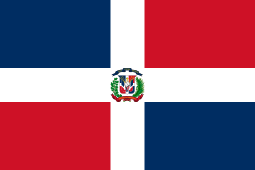

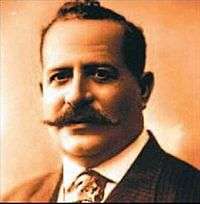
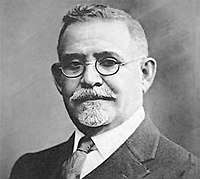

.jpg)
